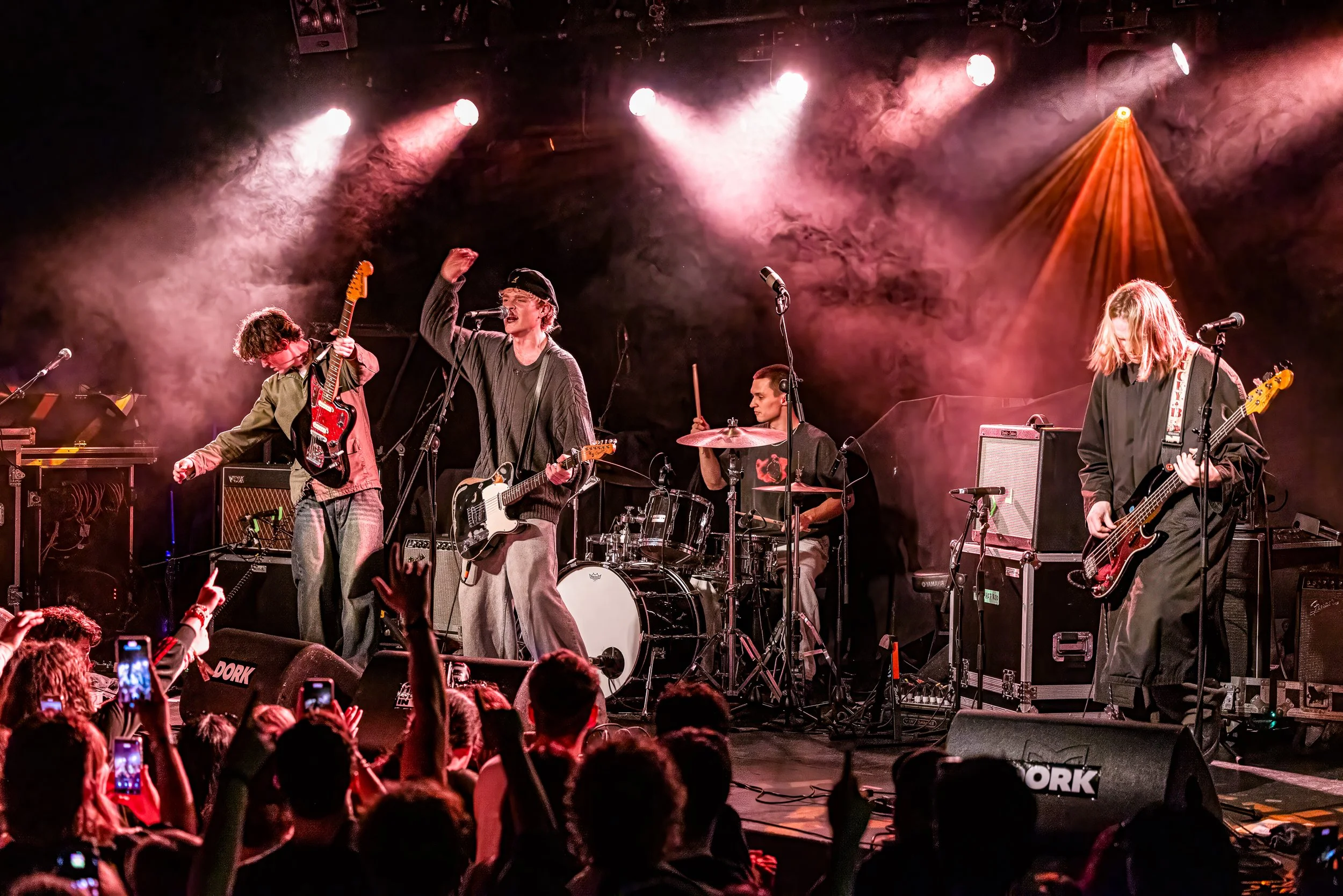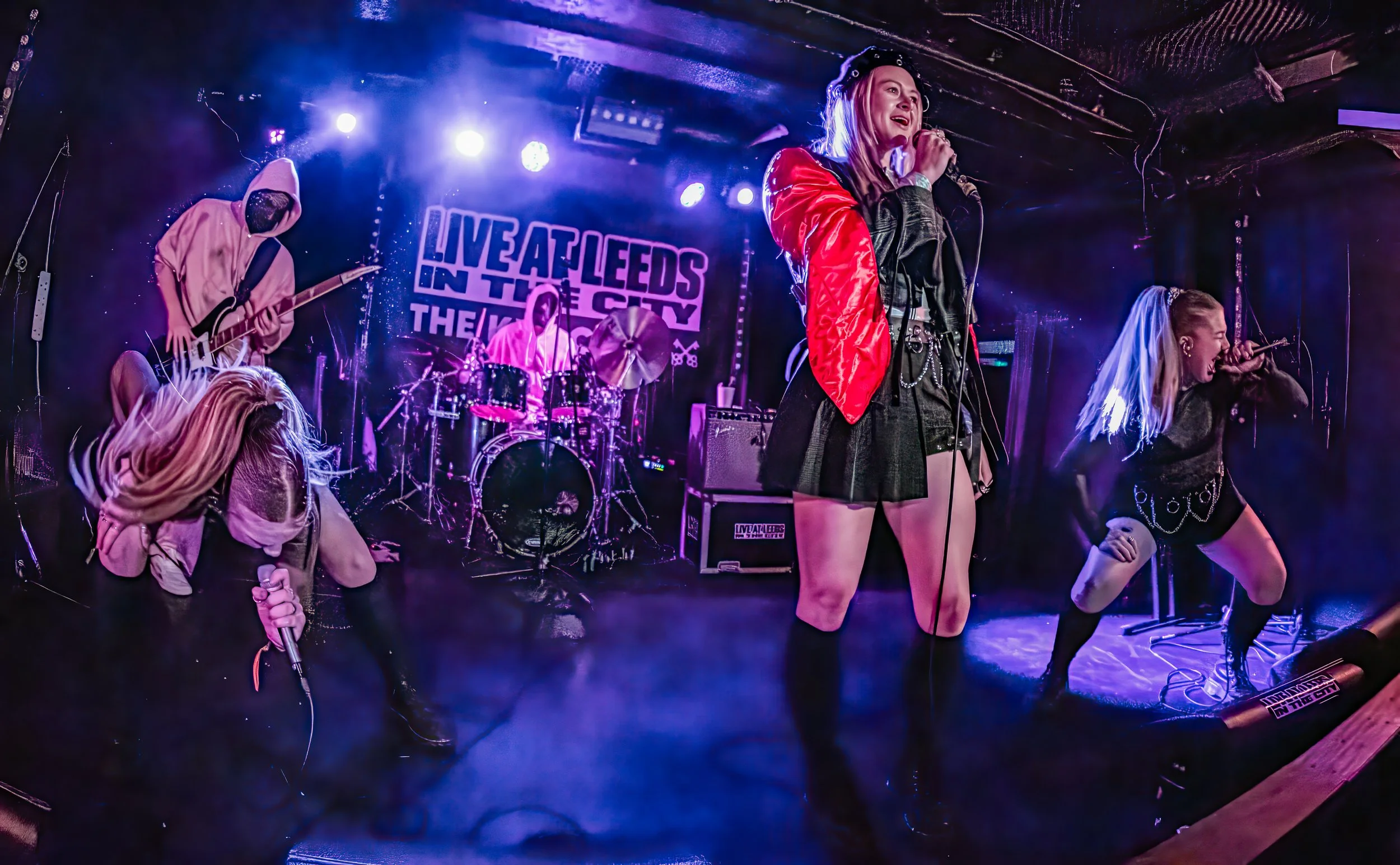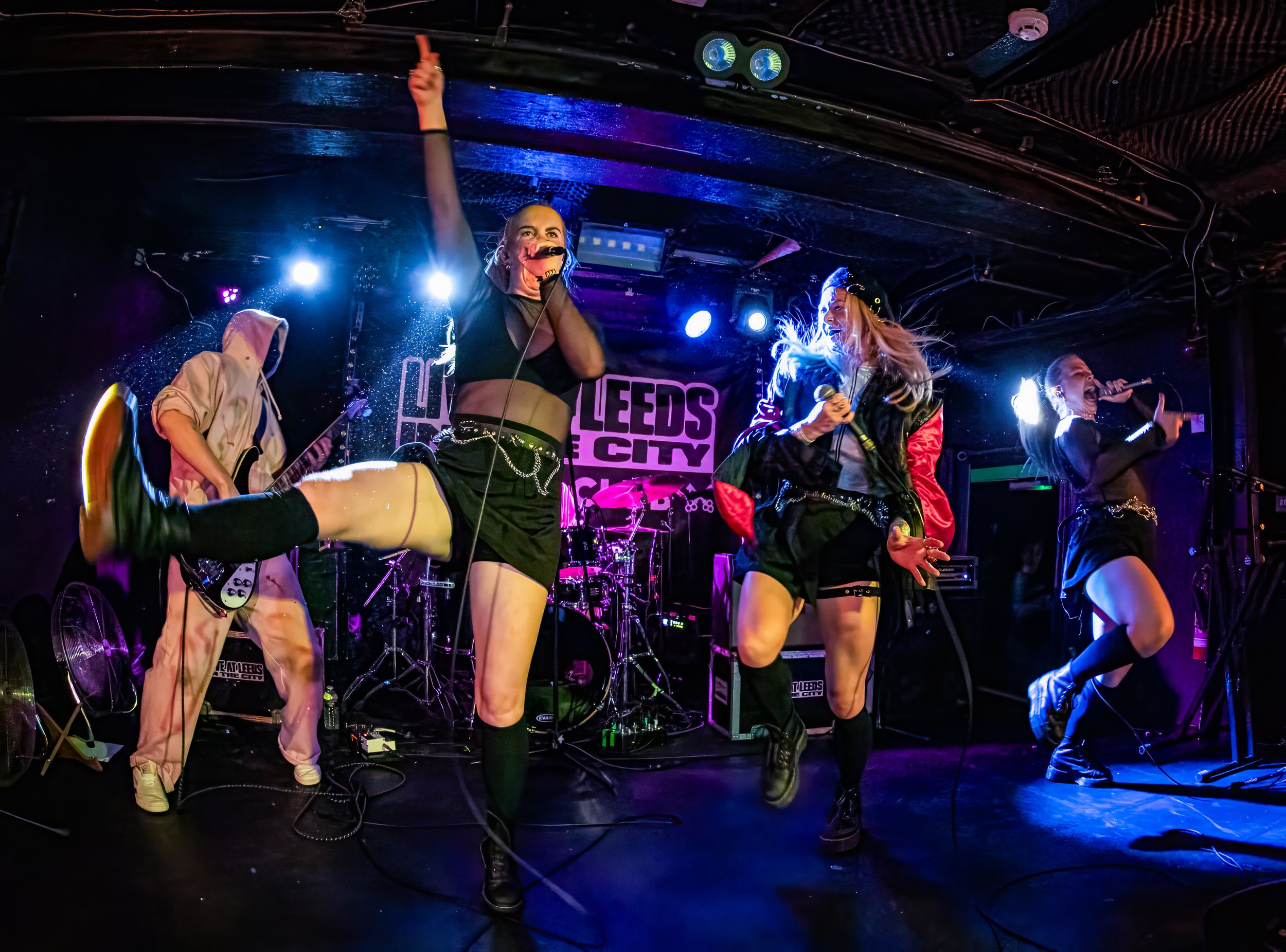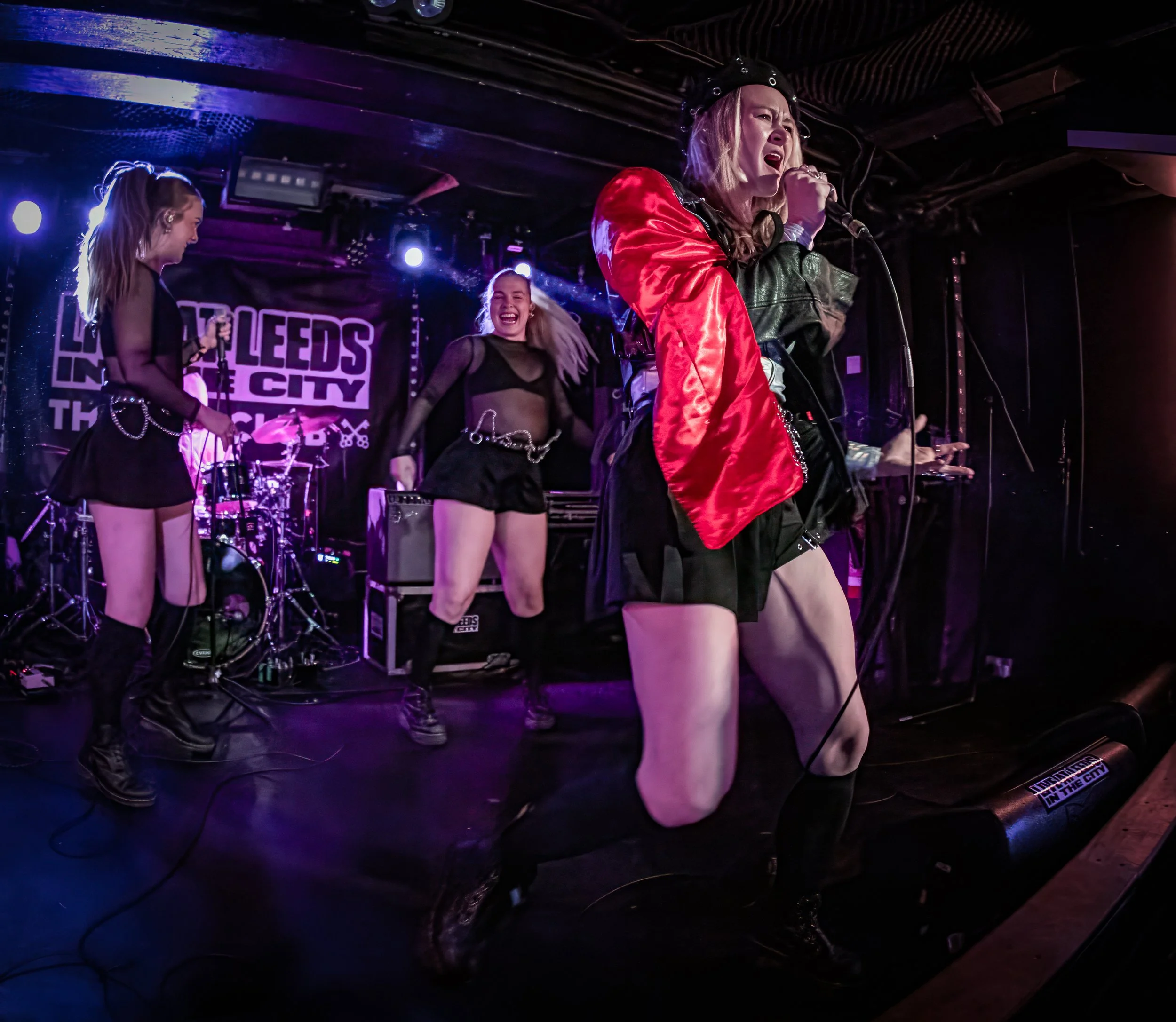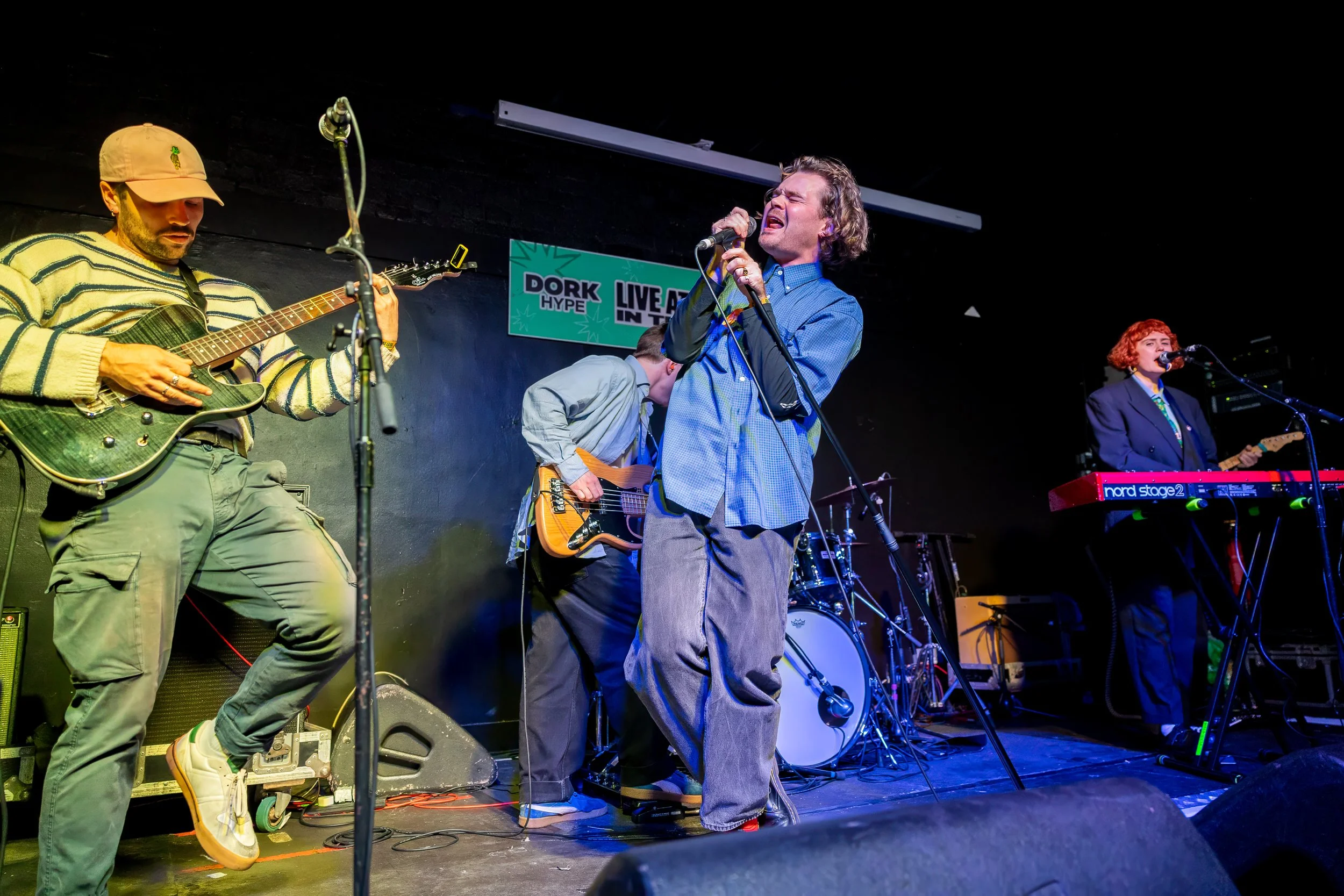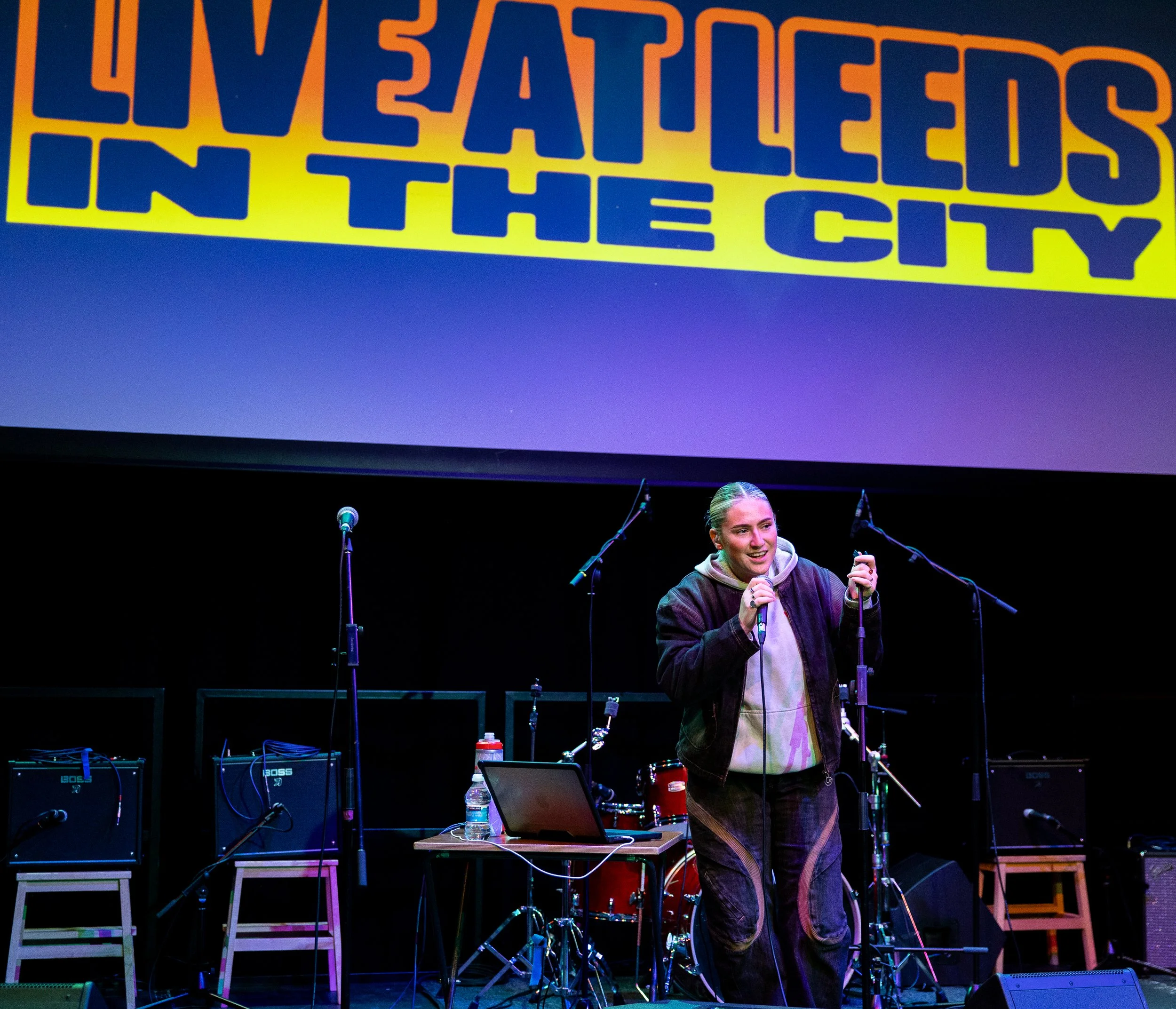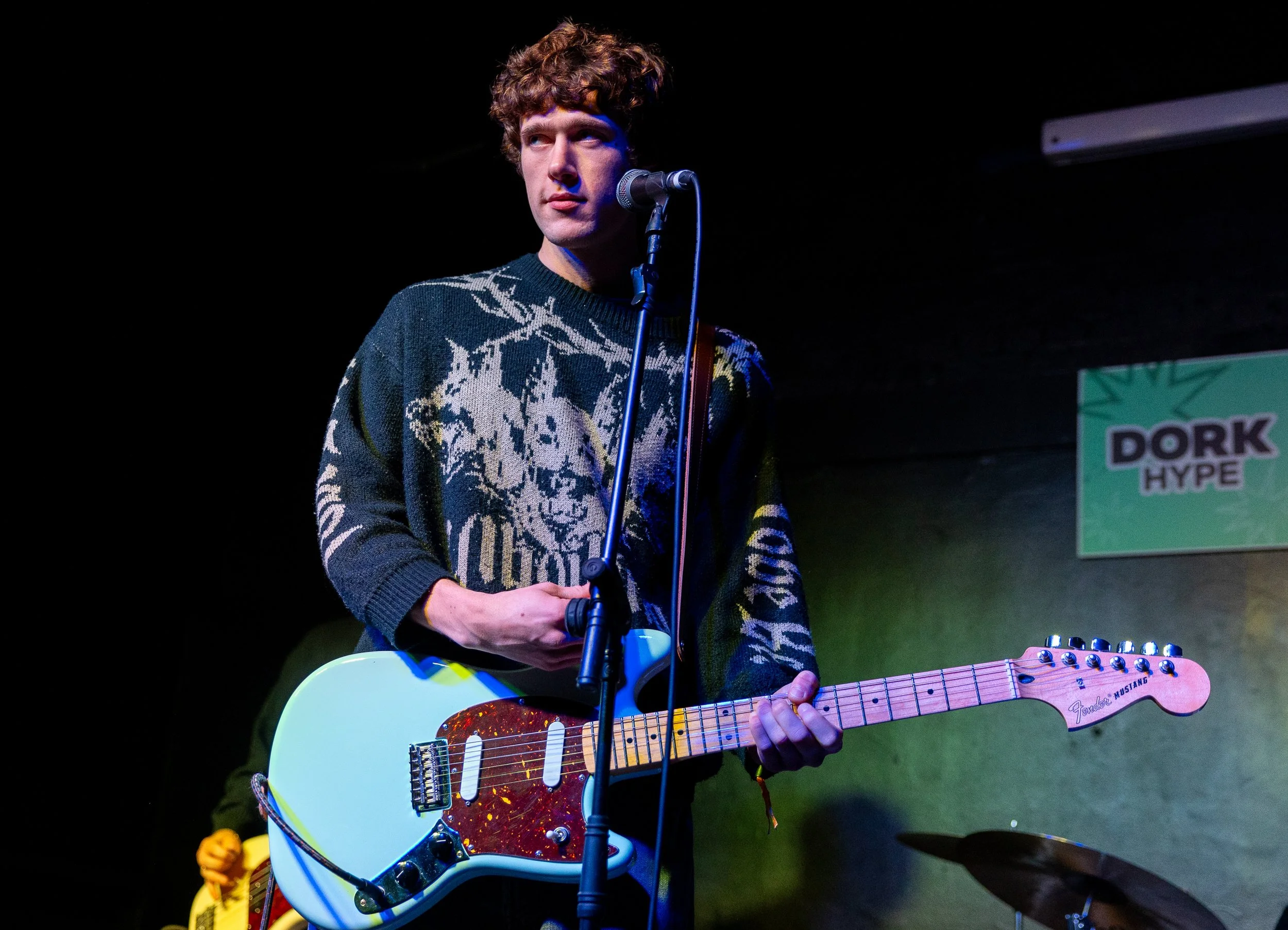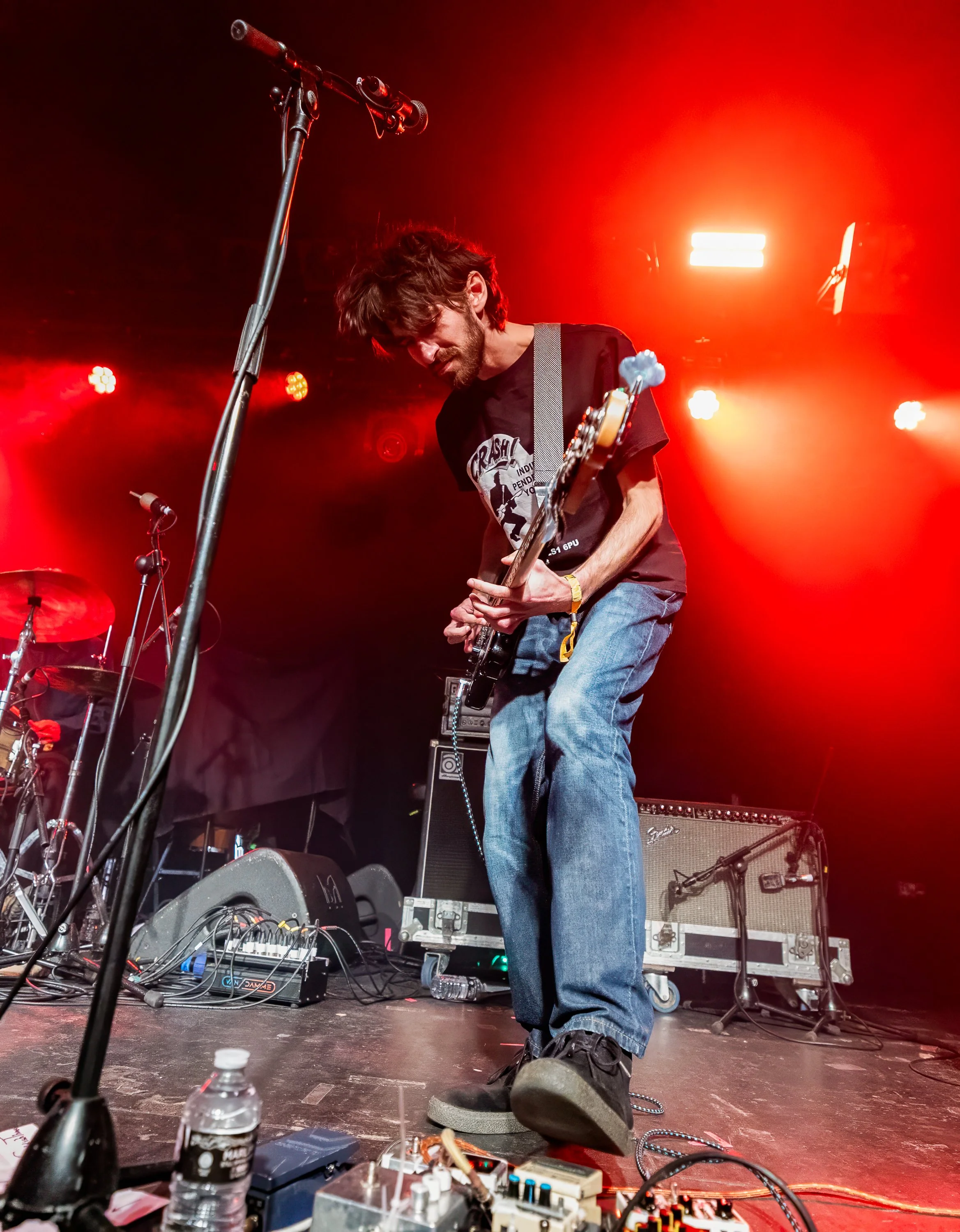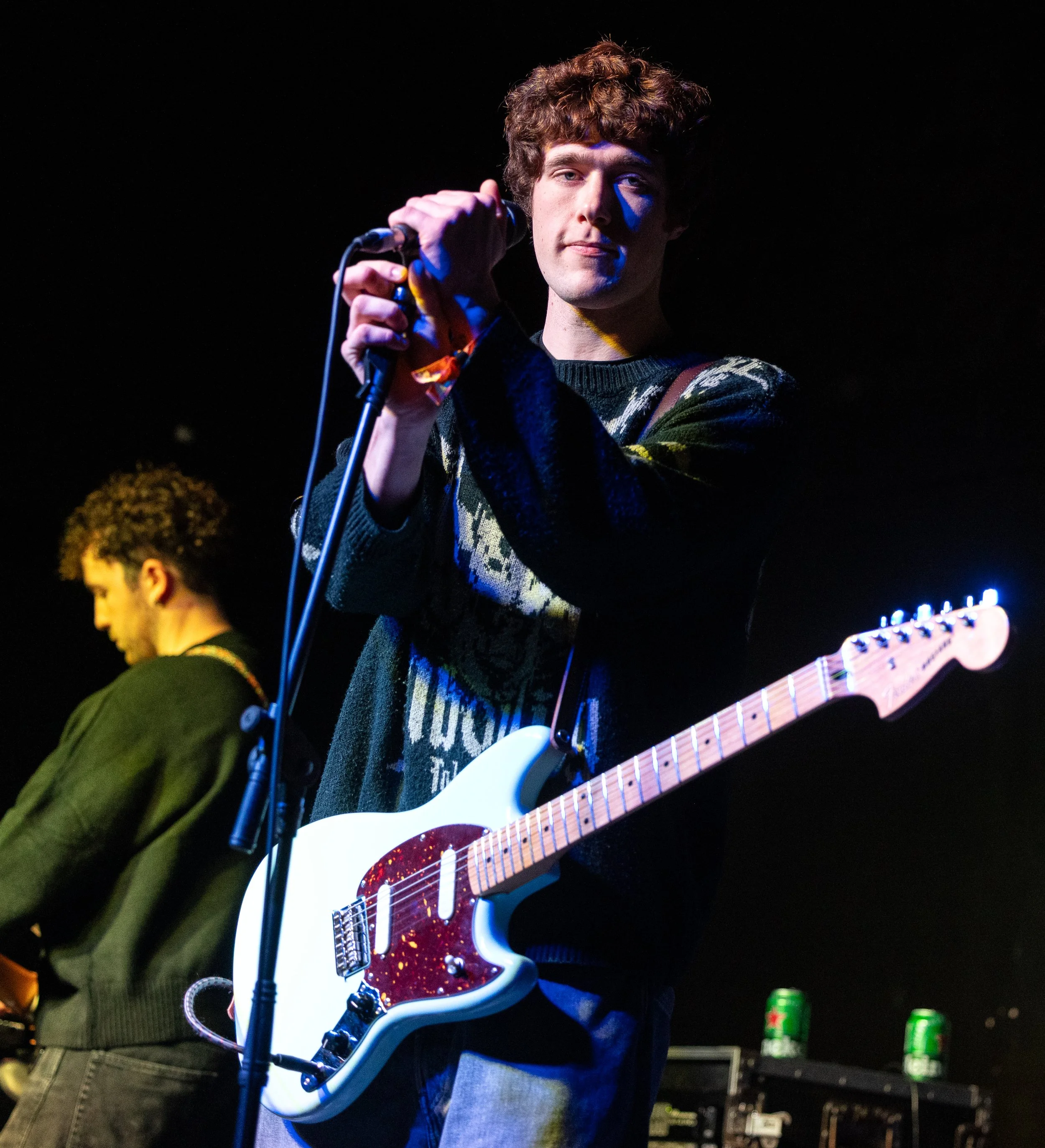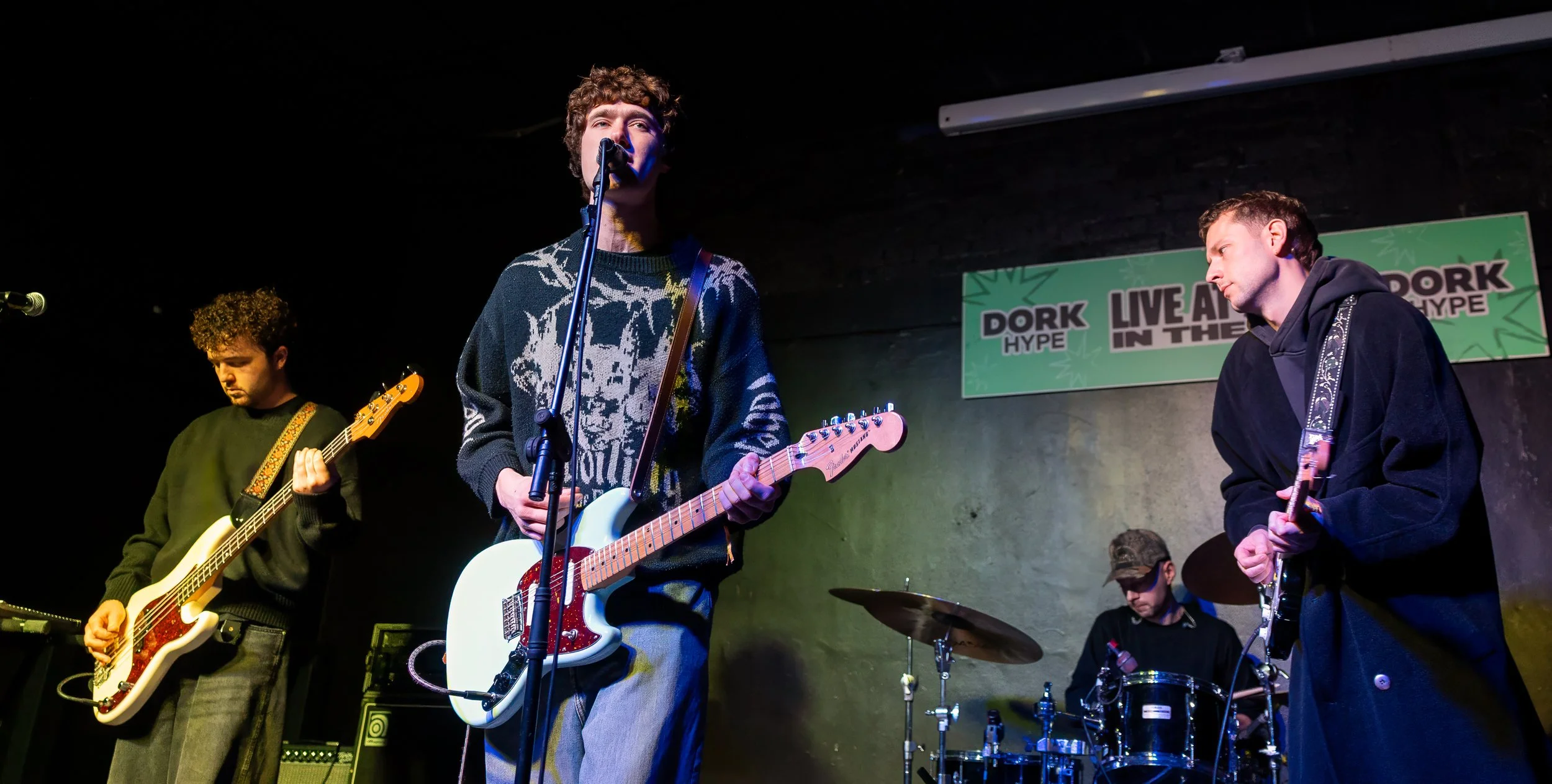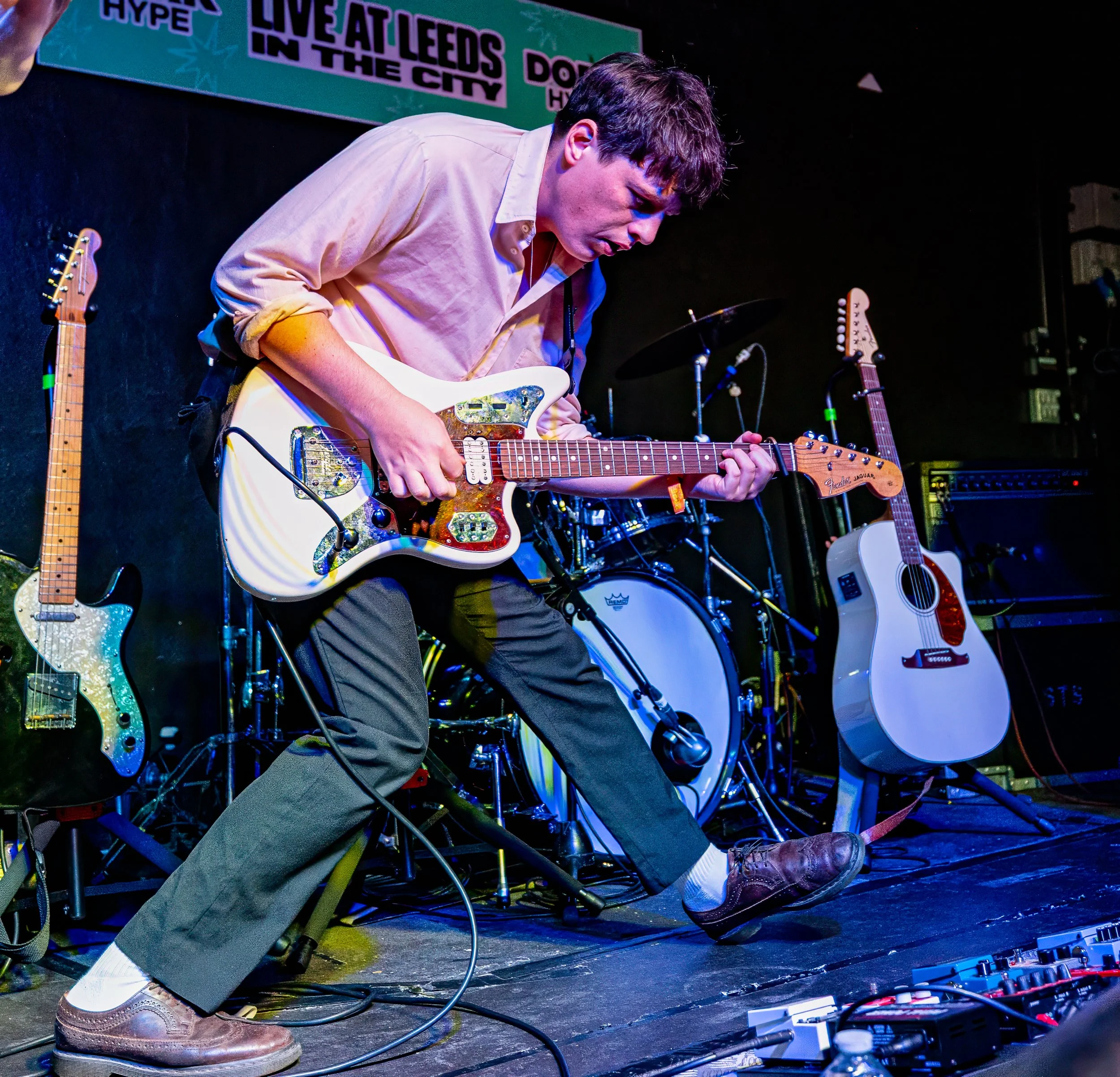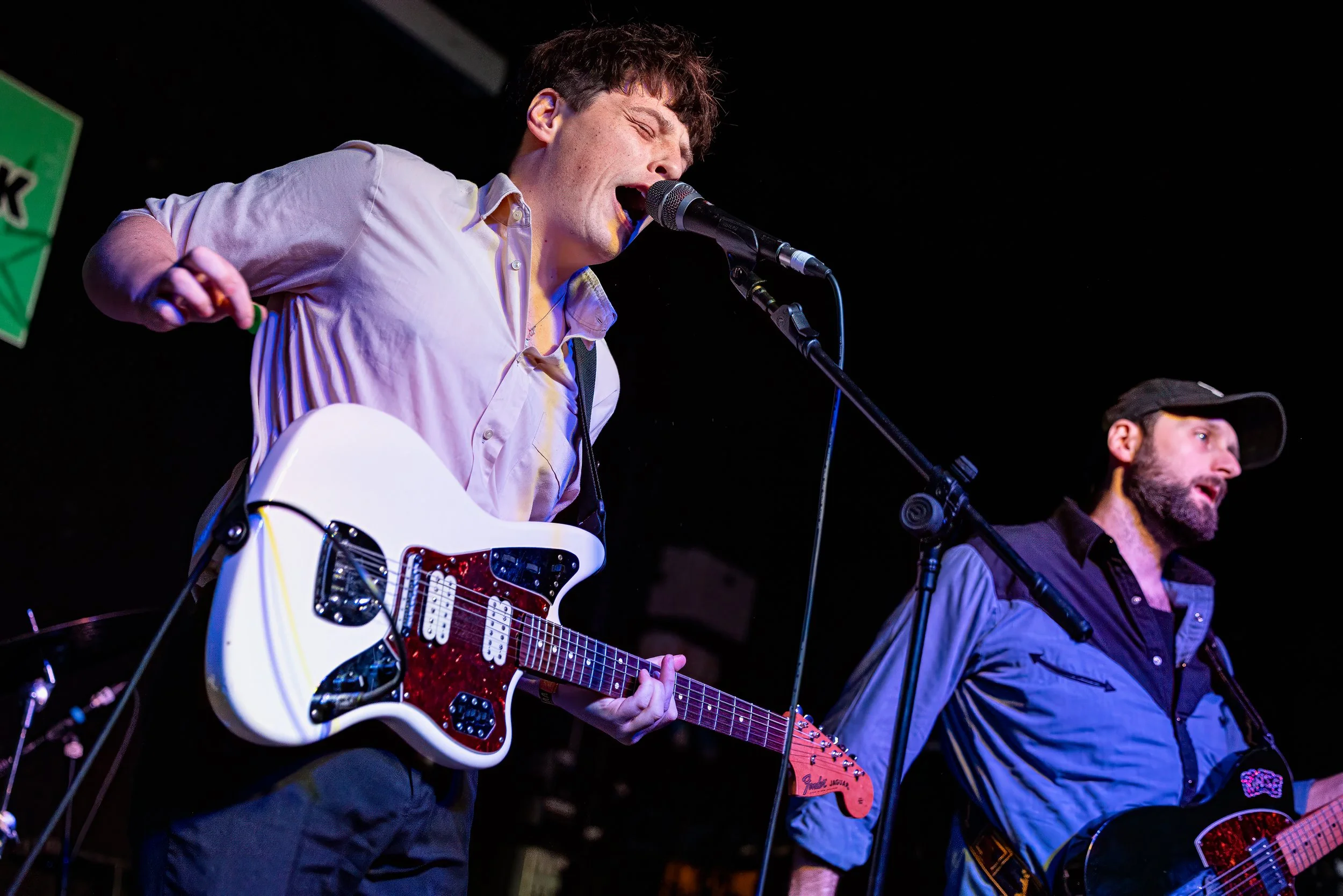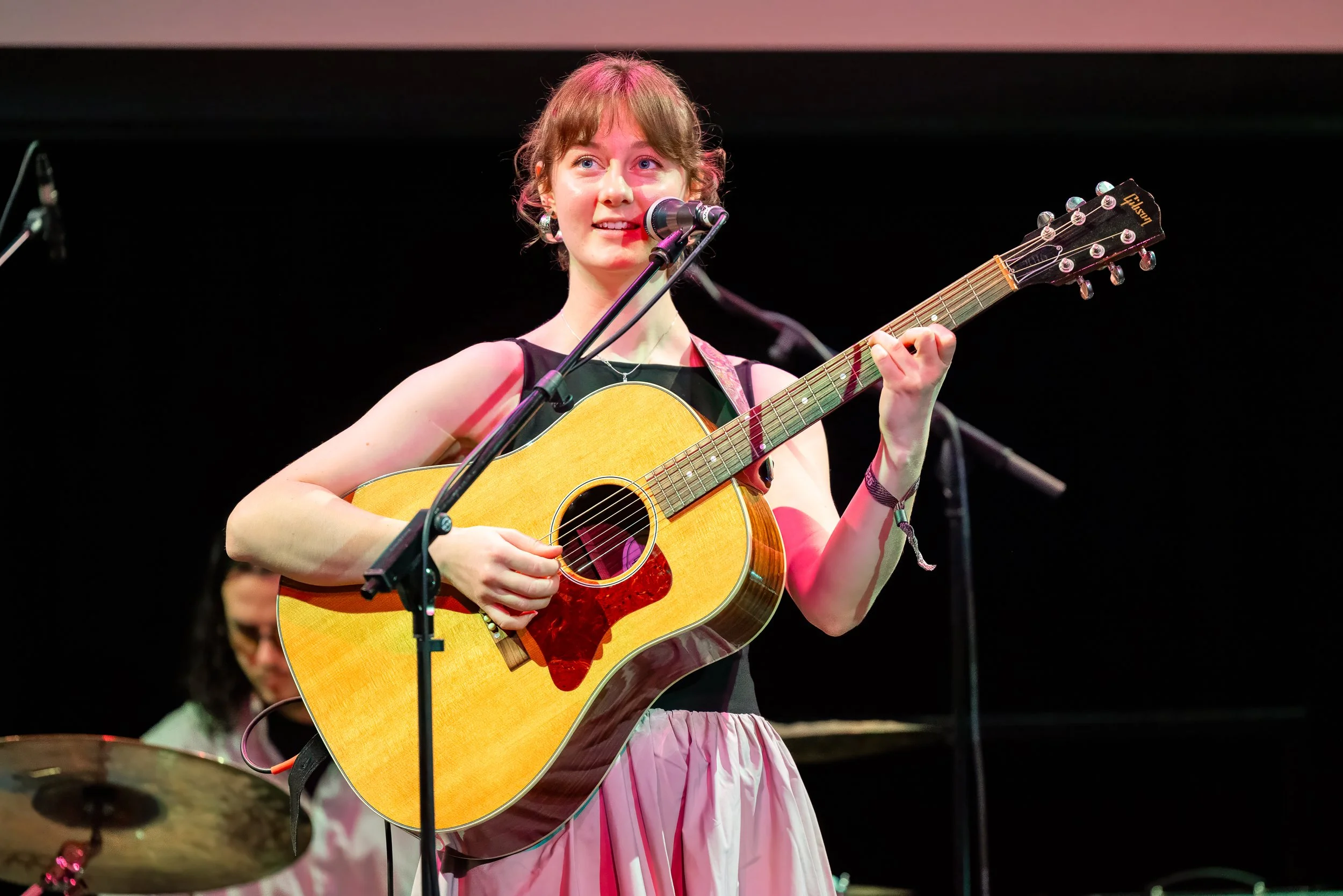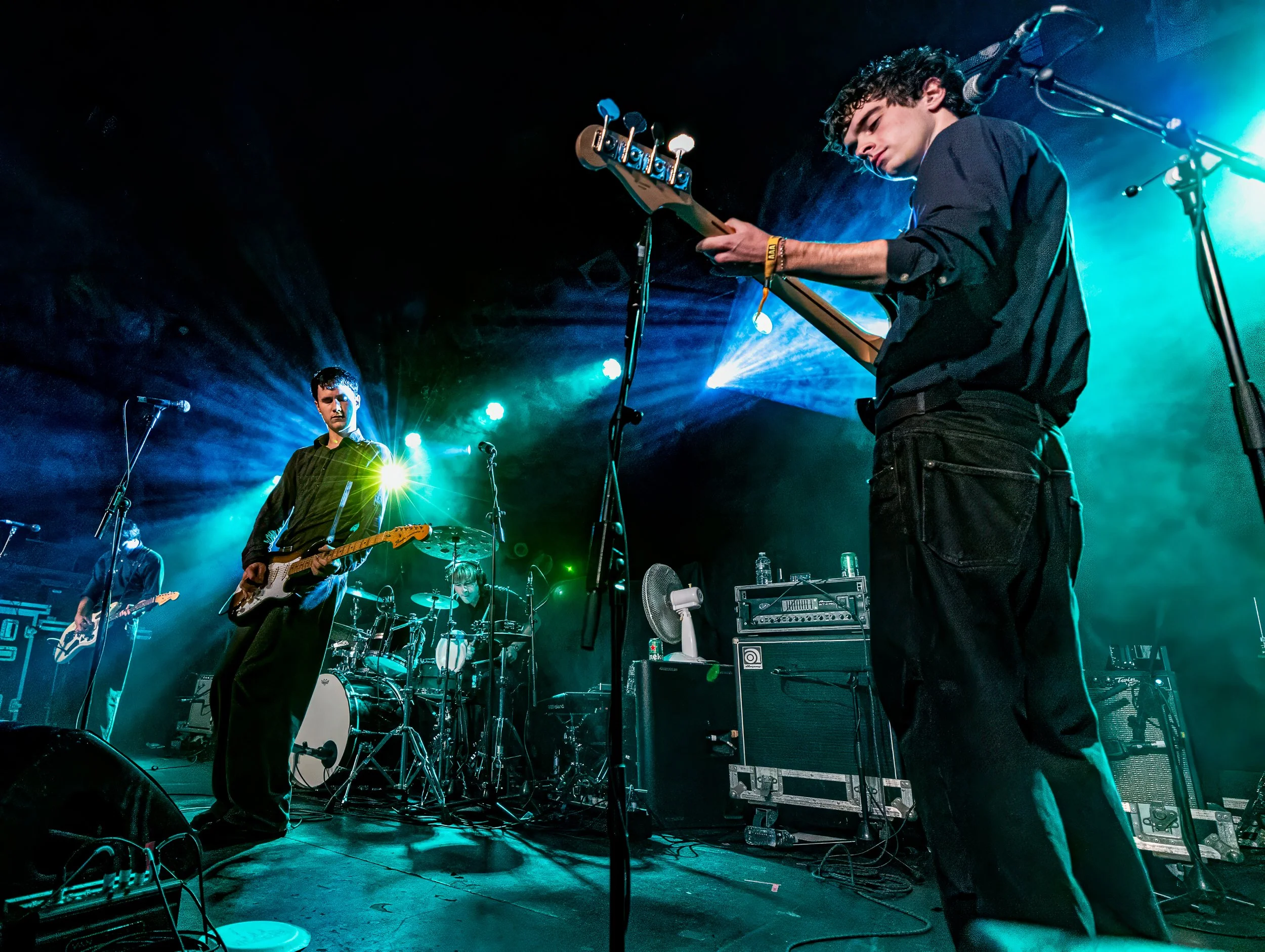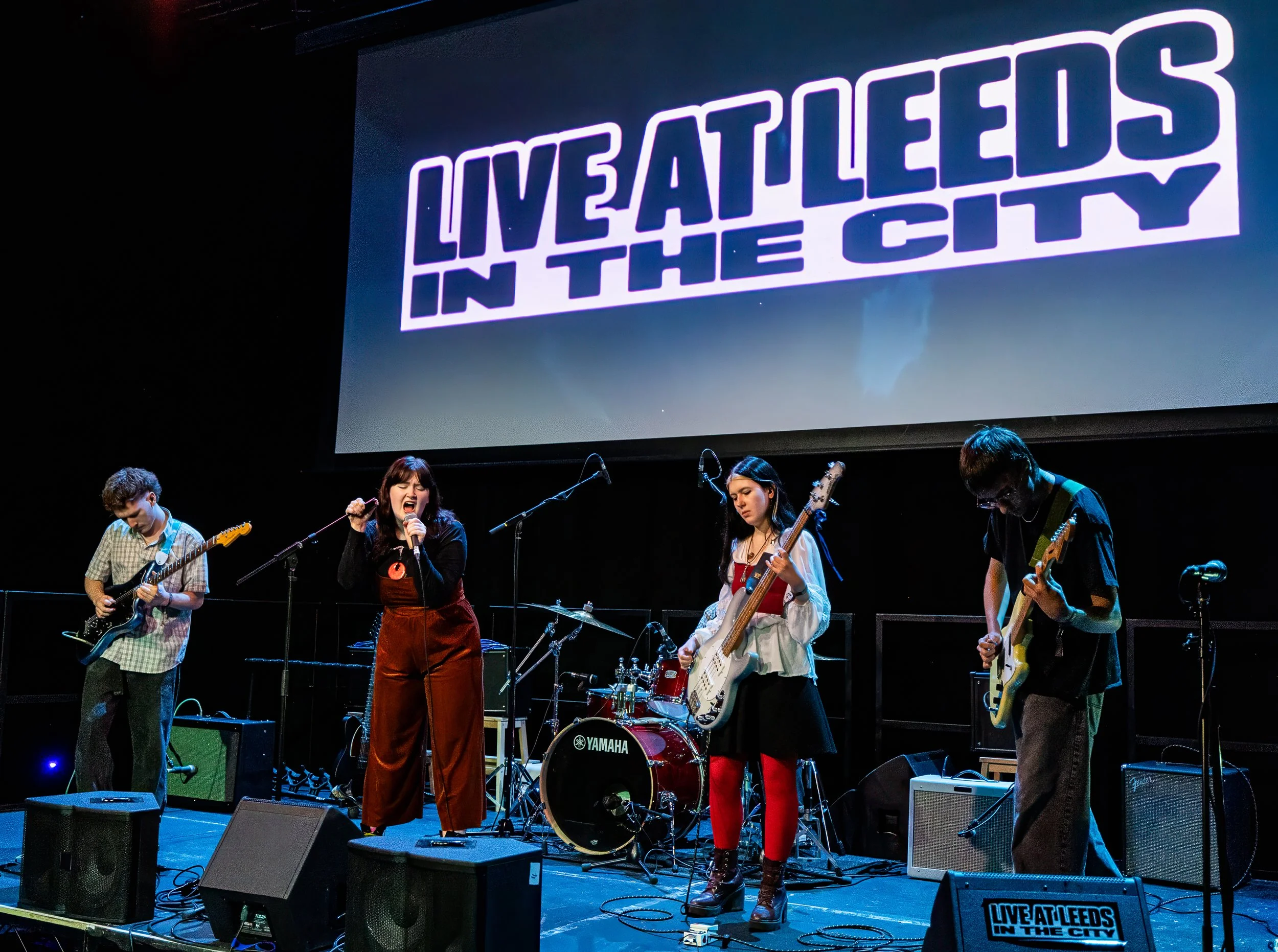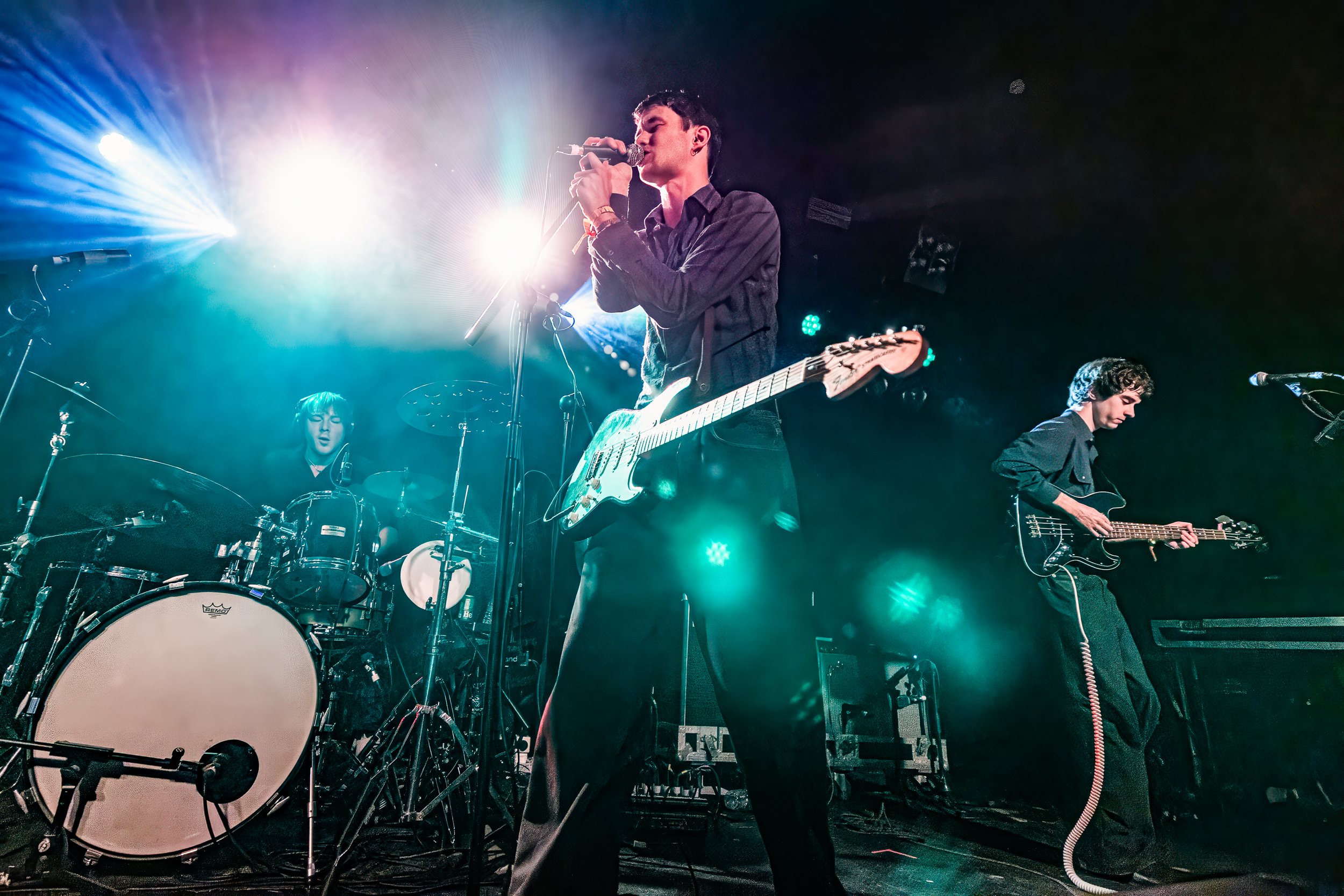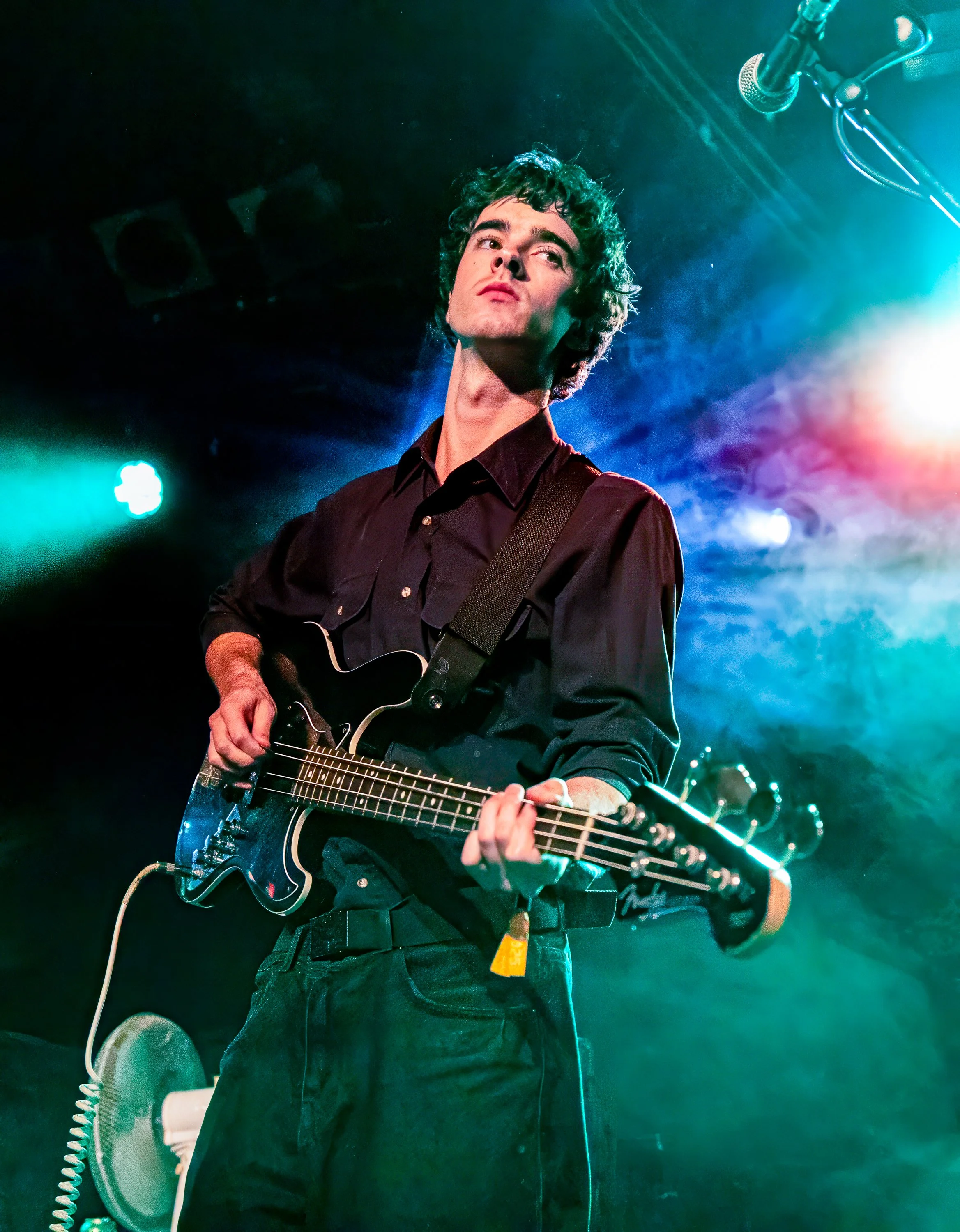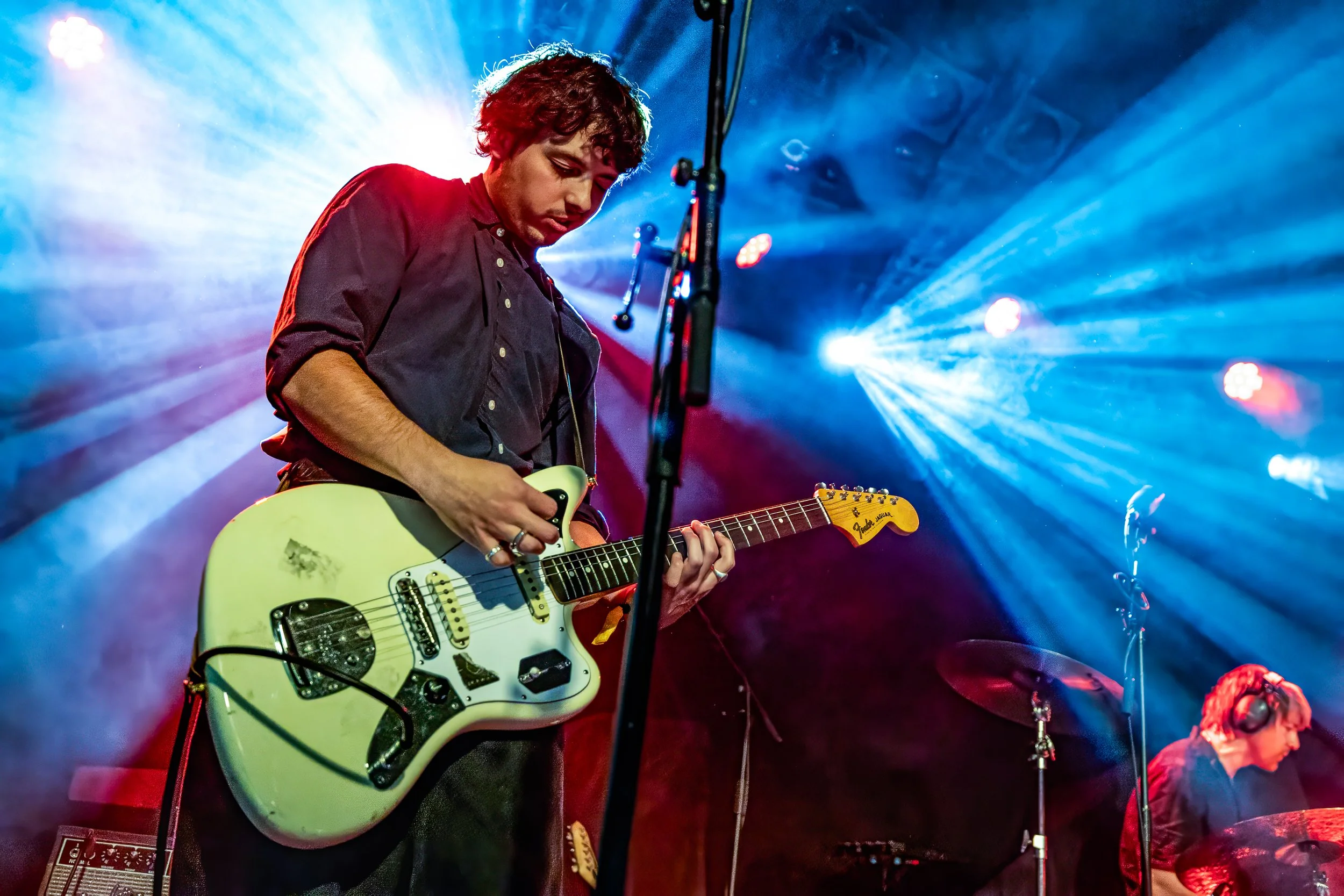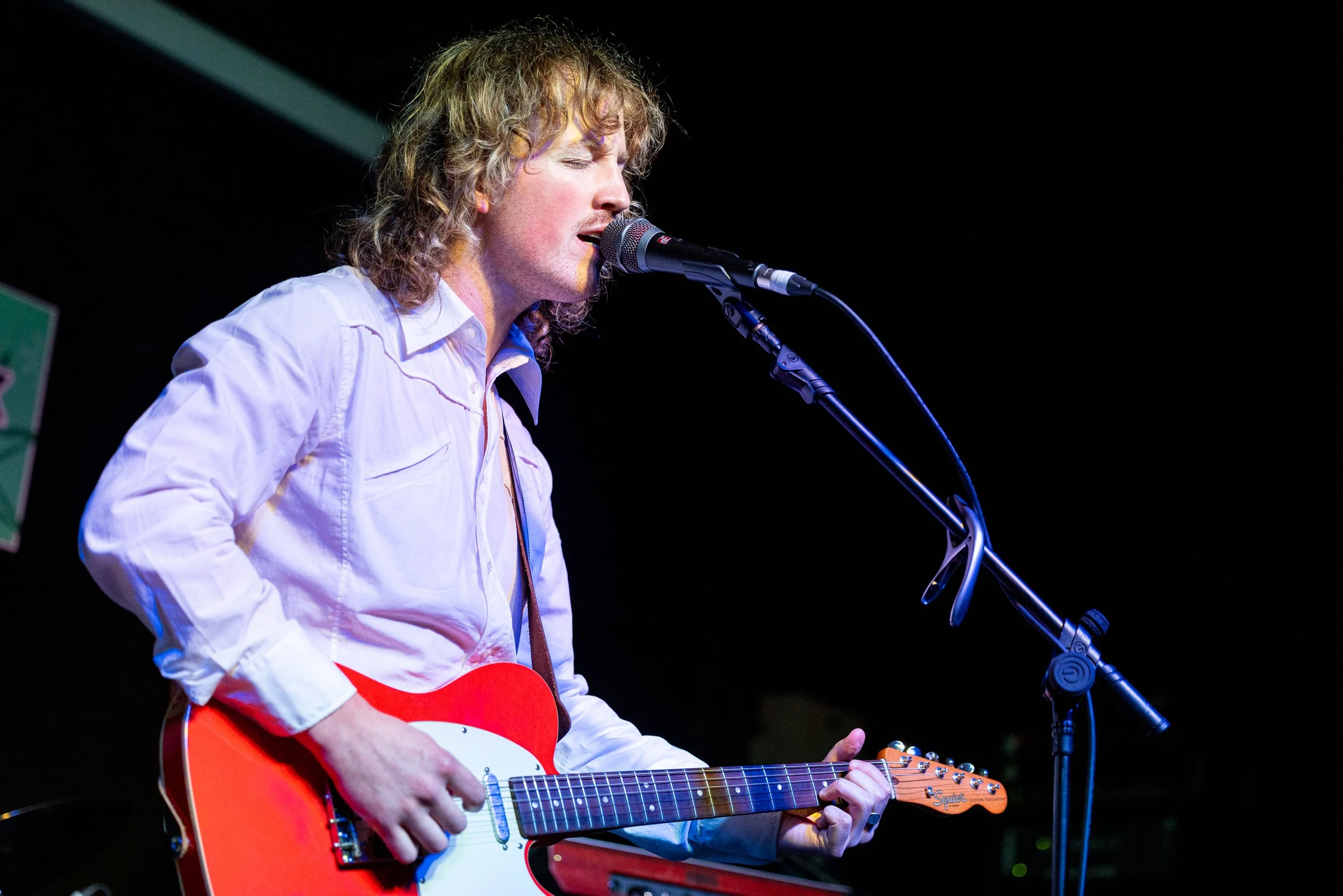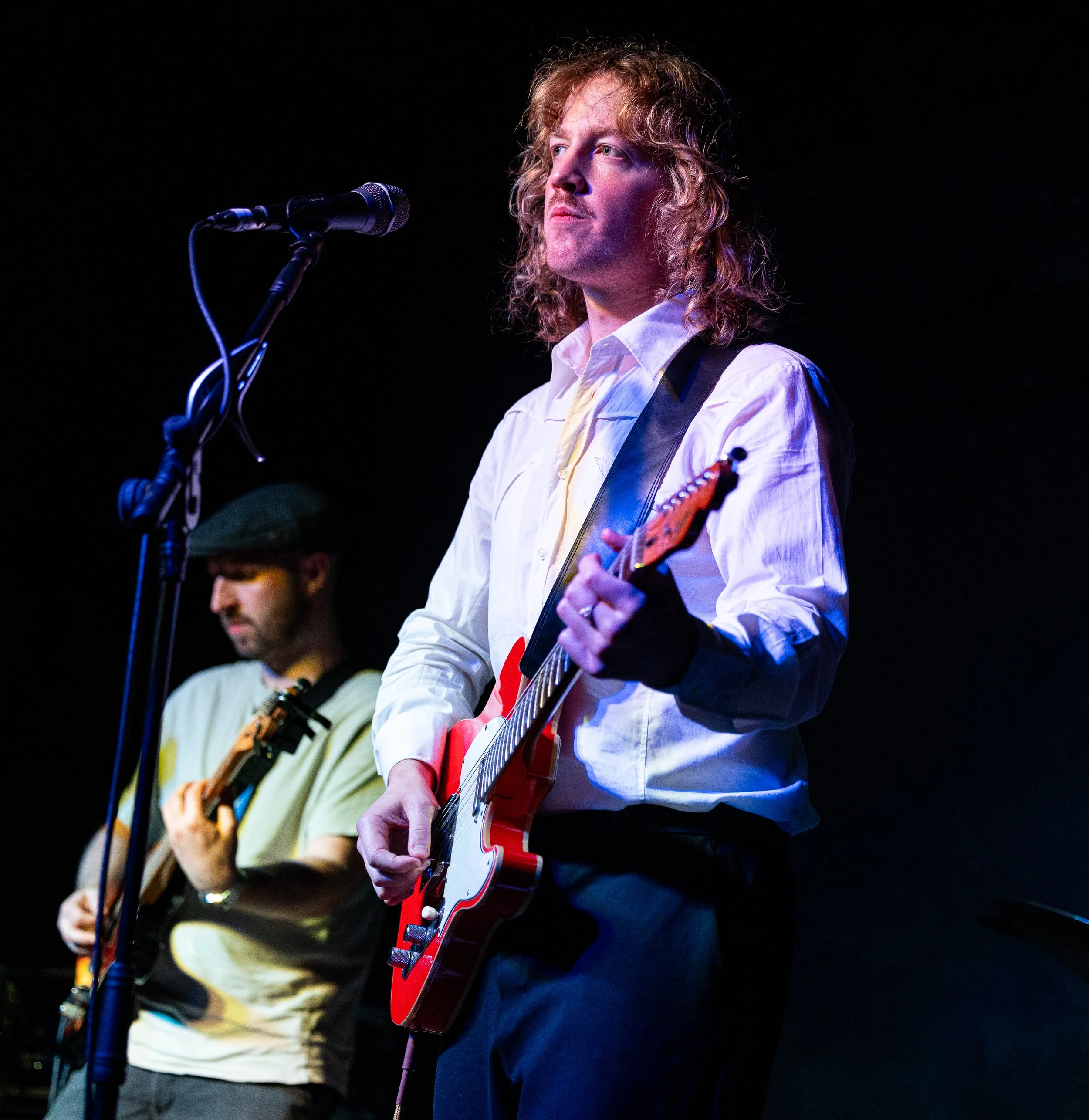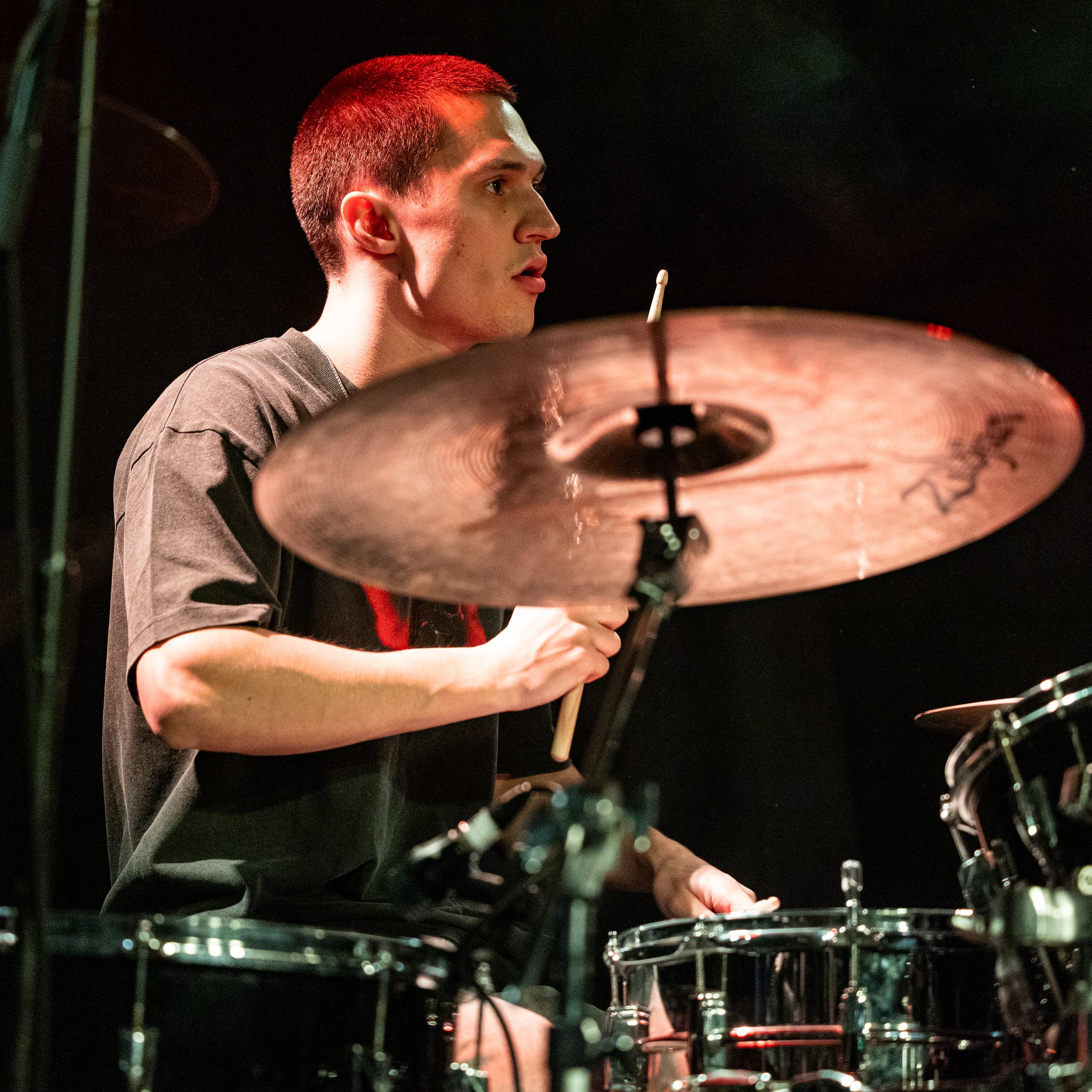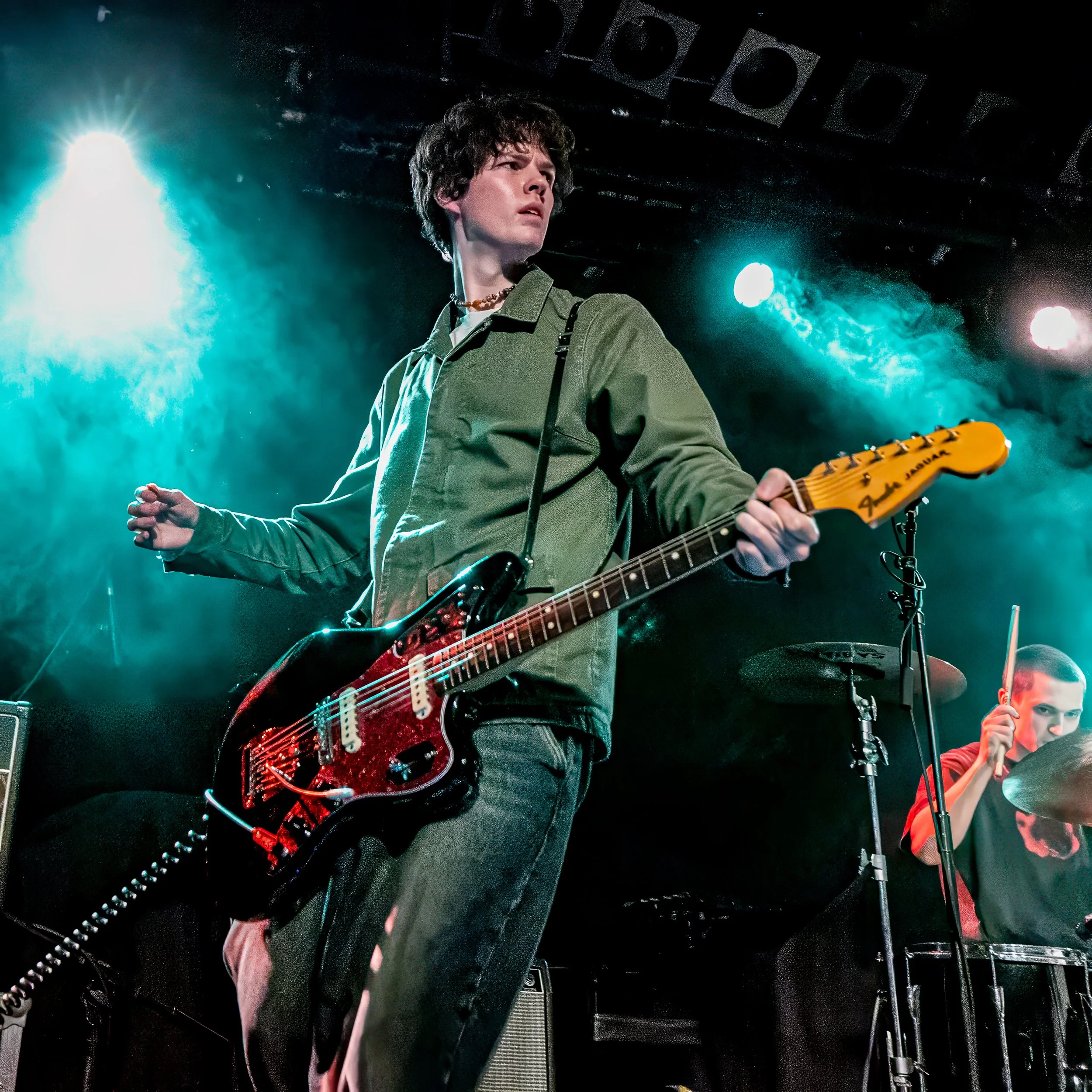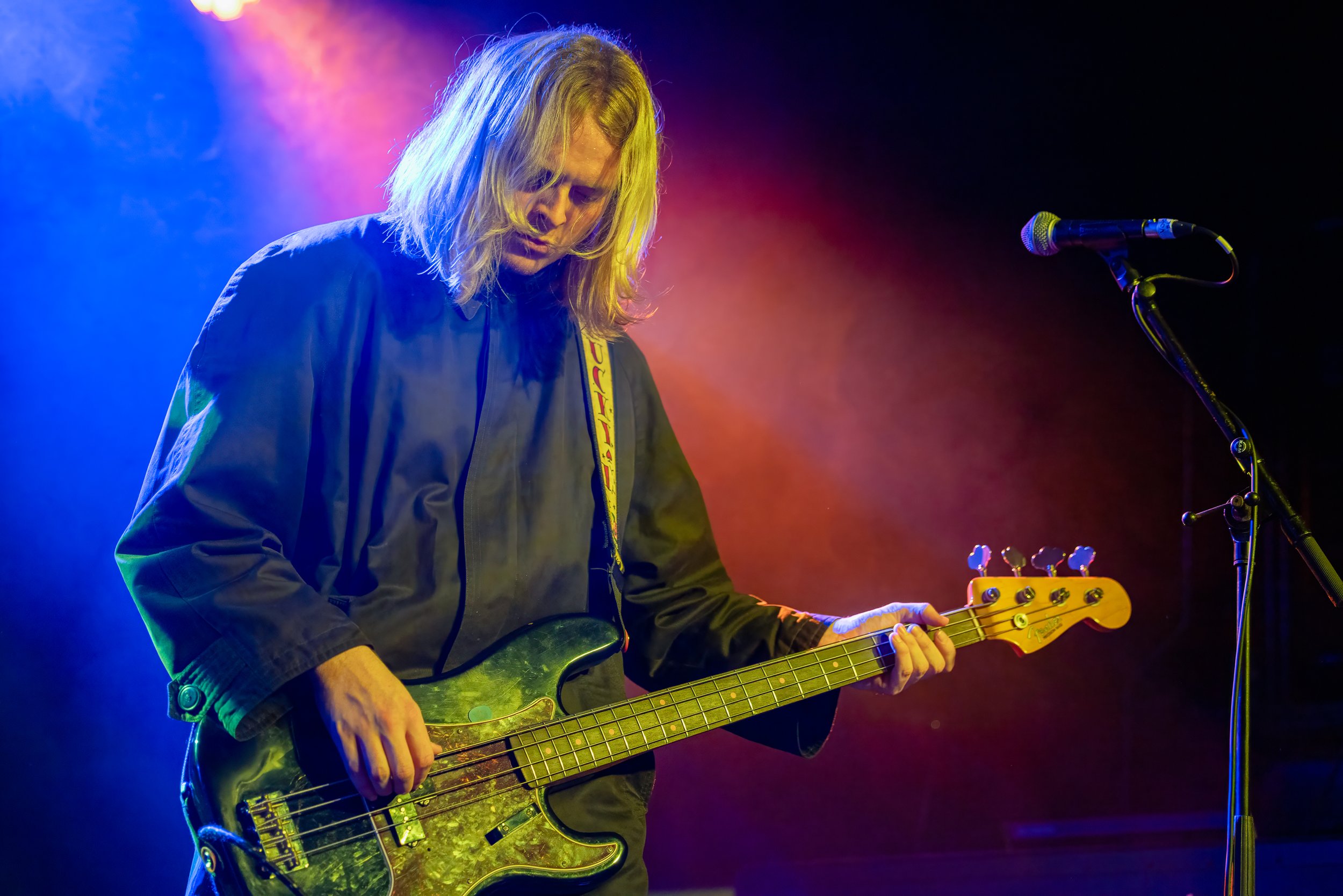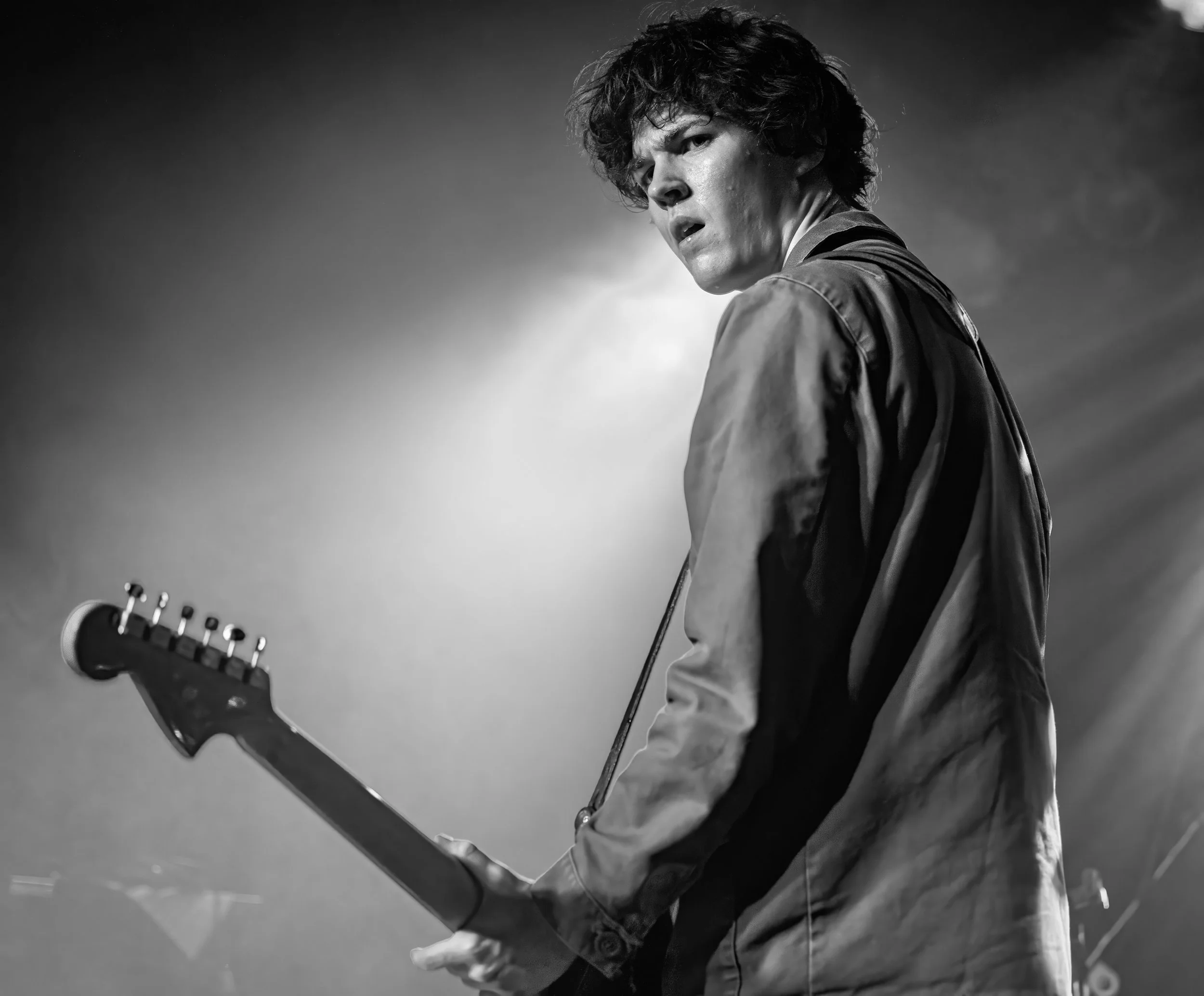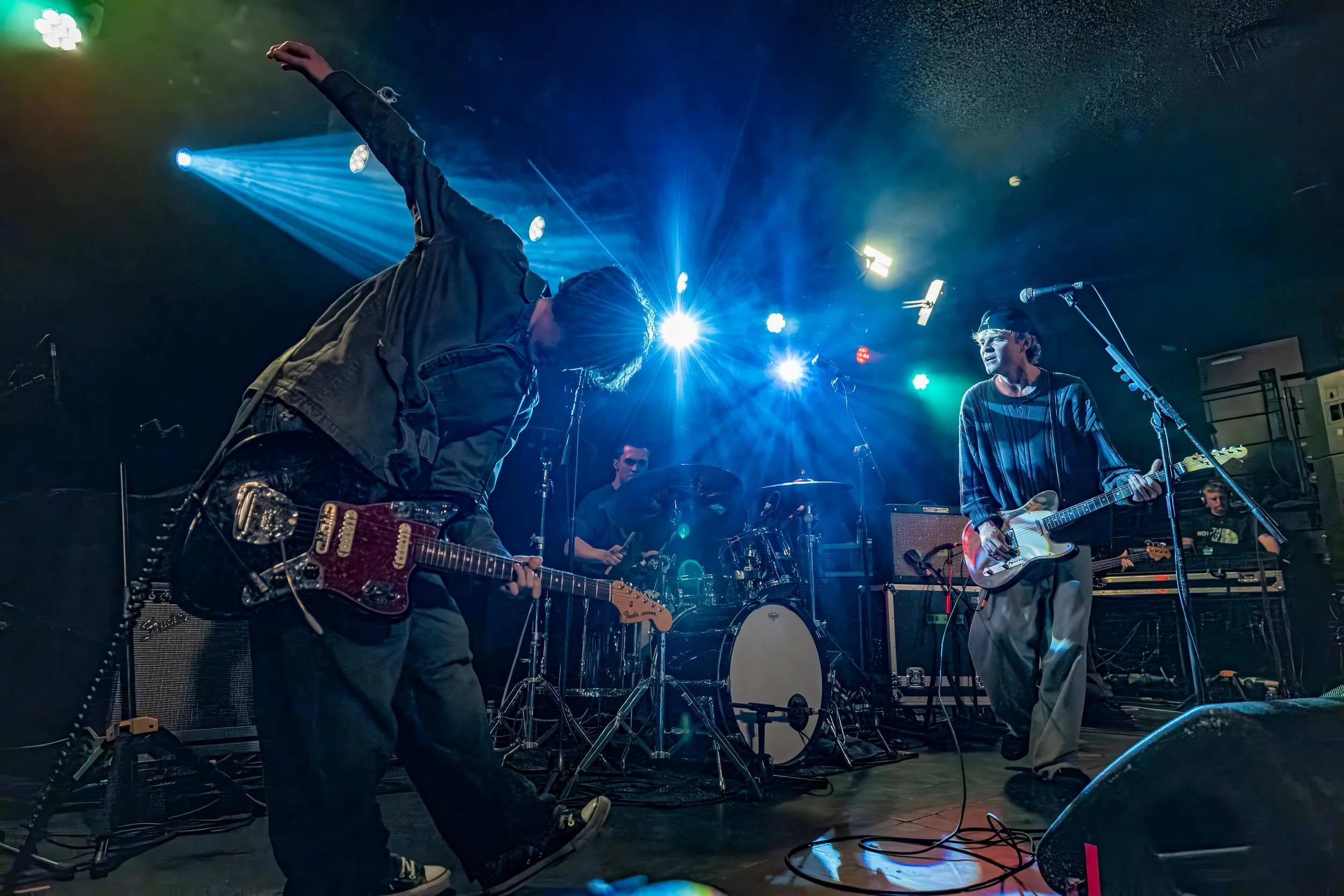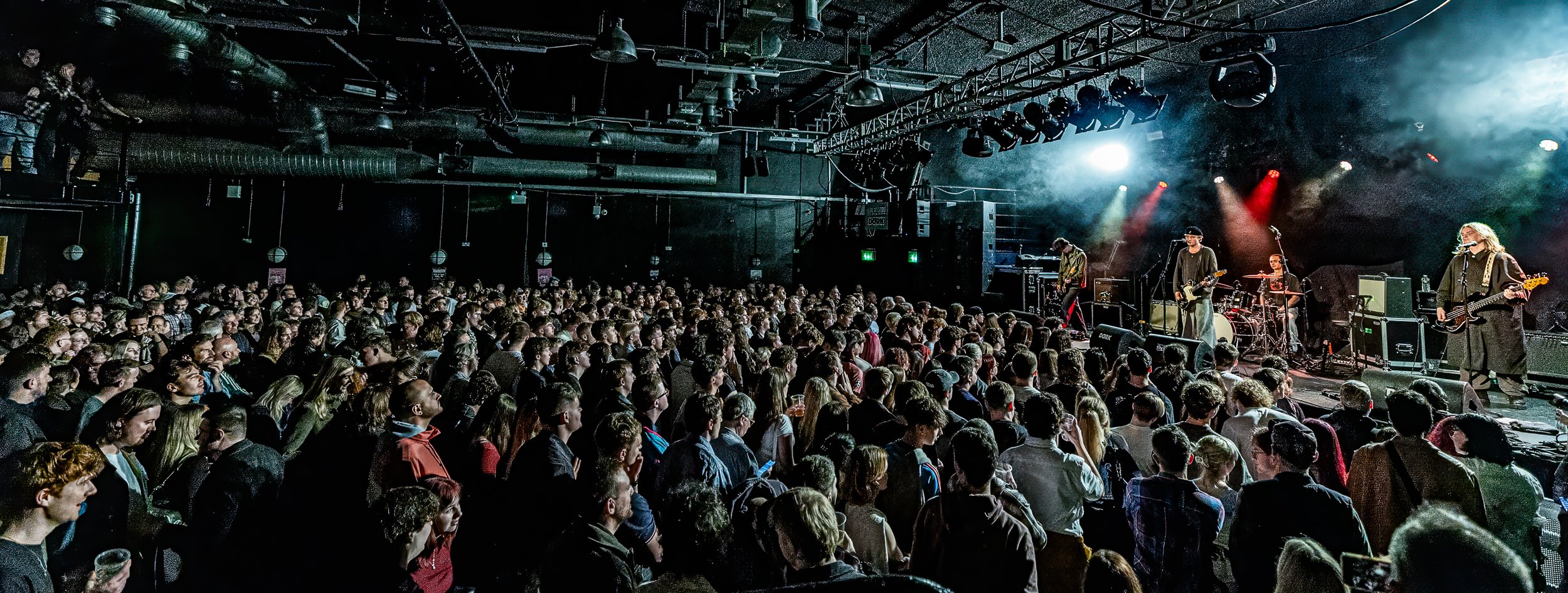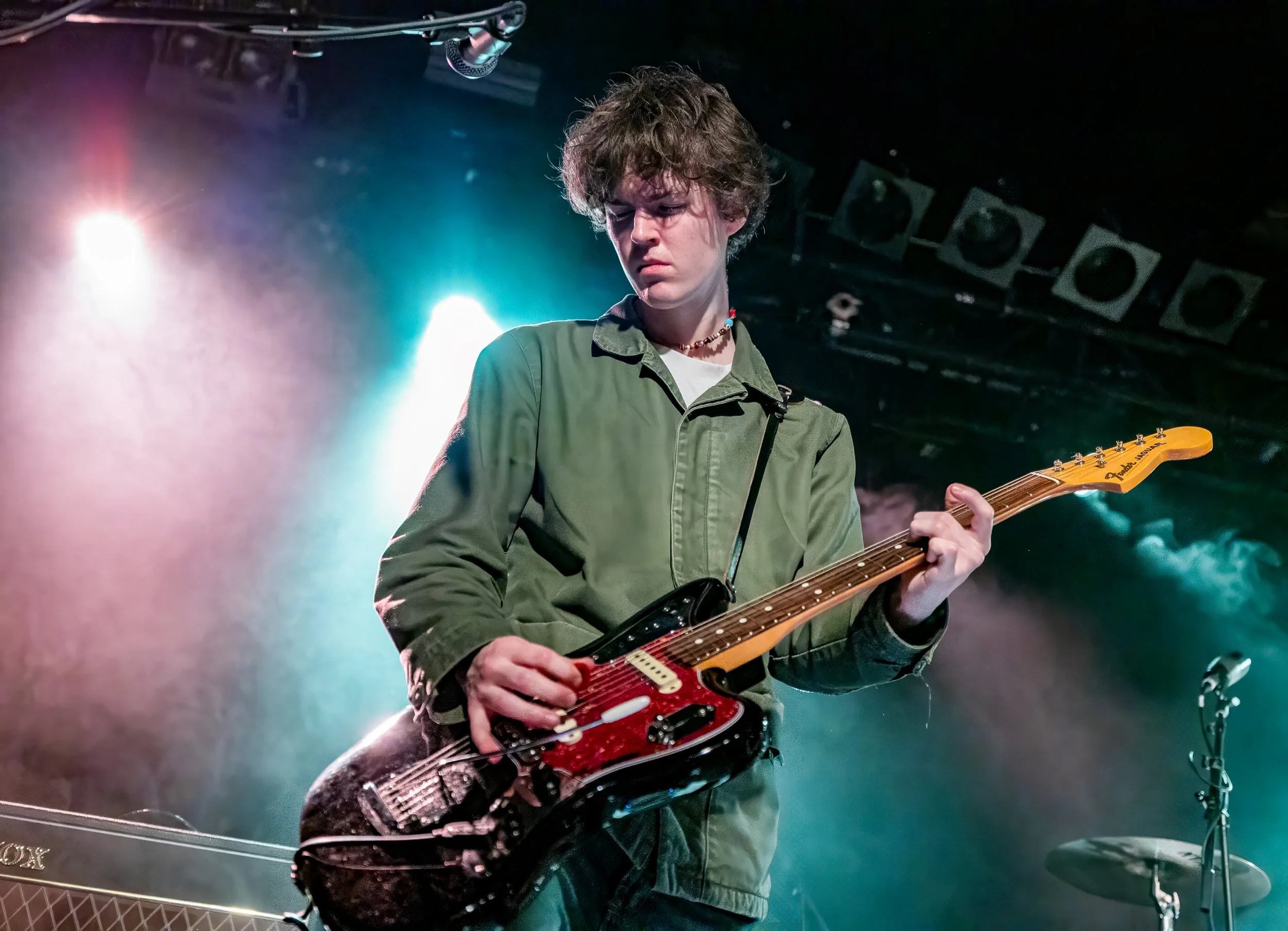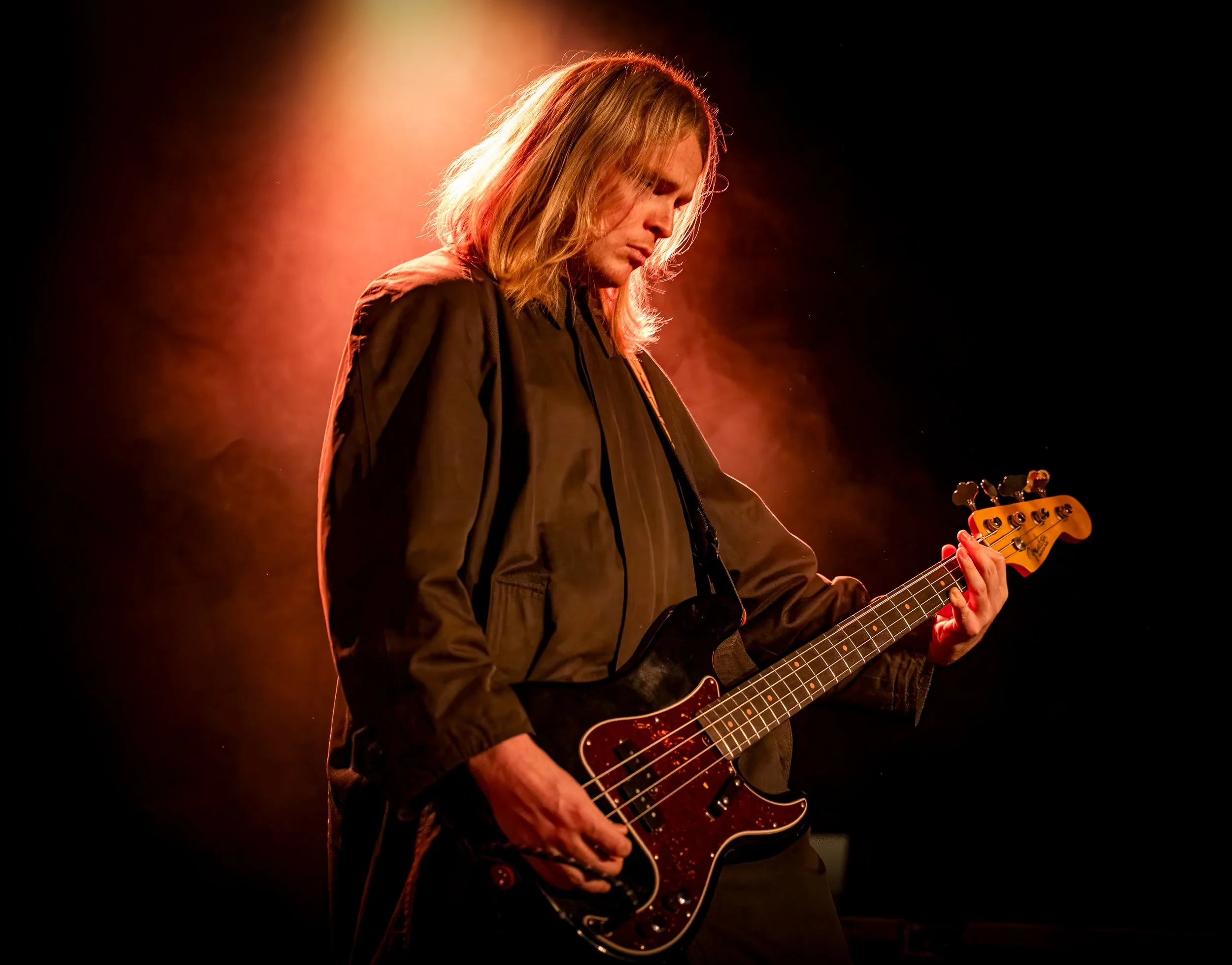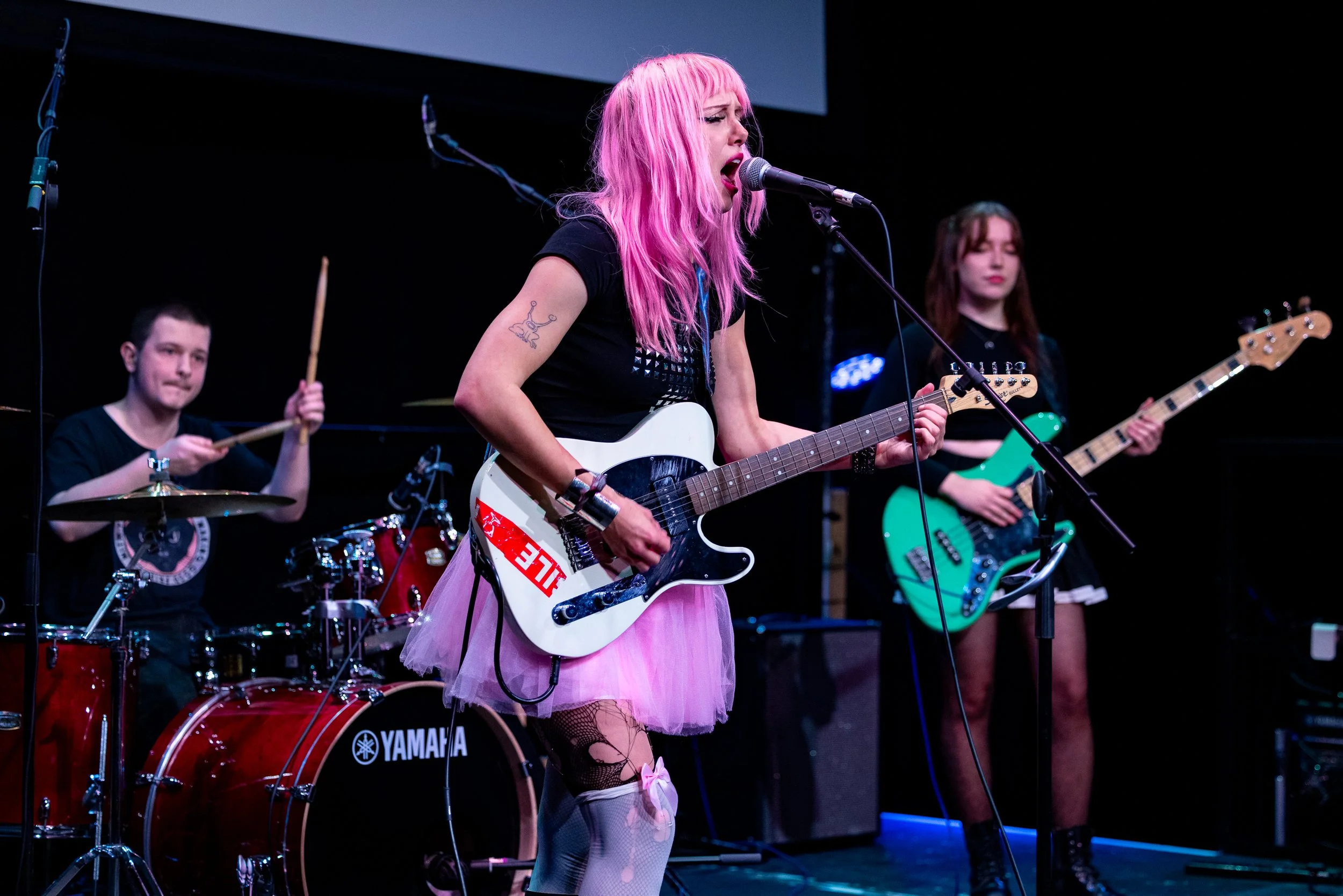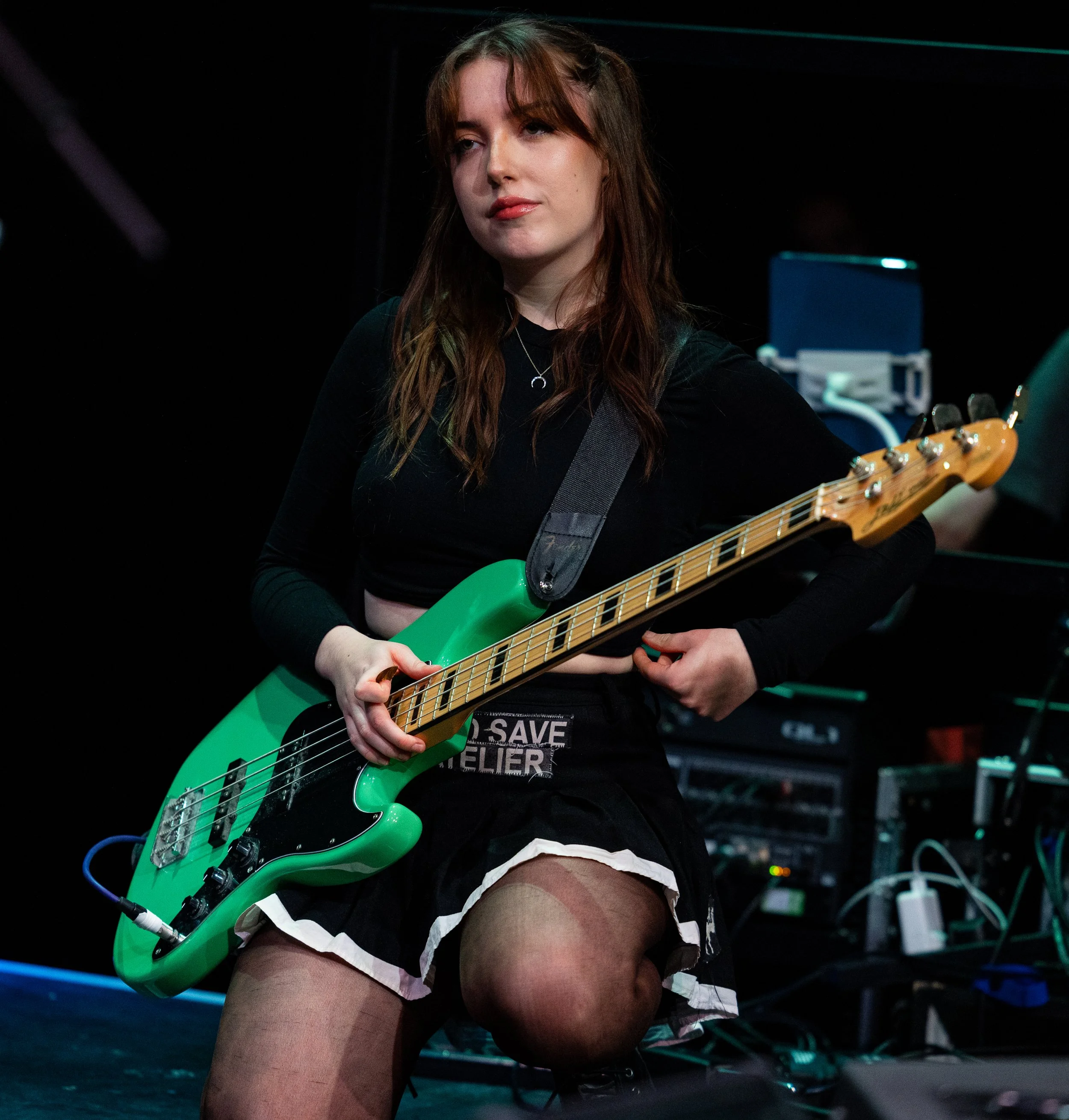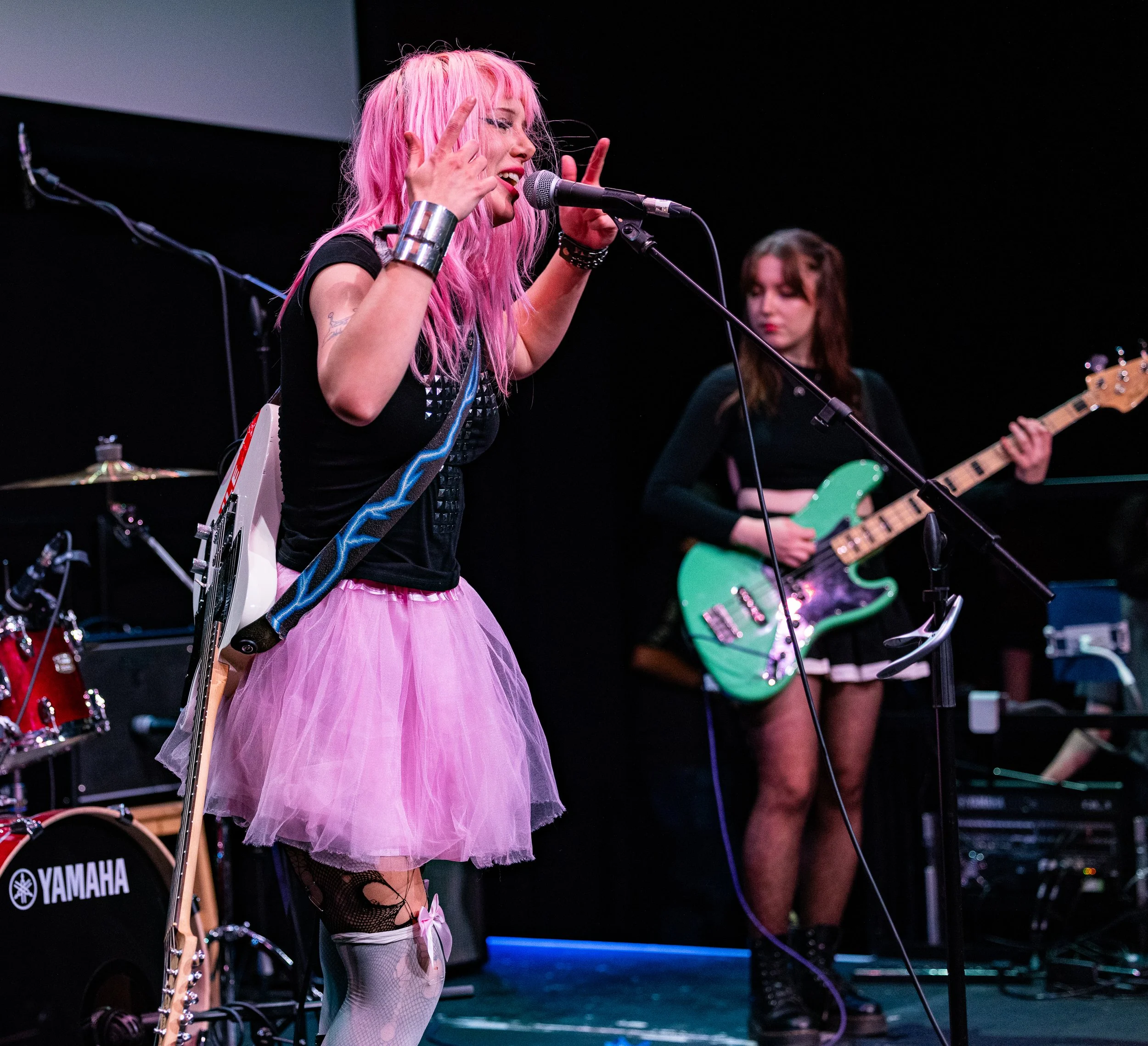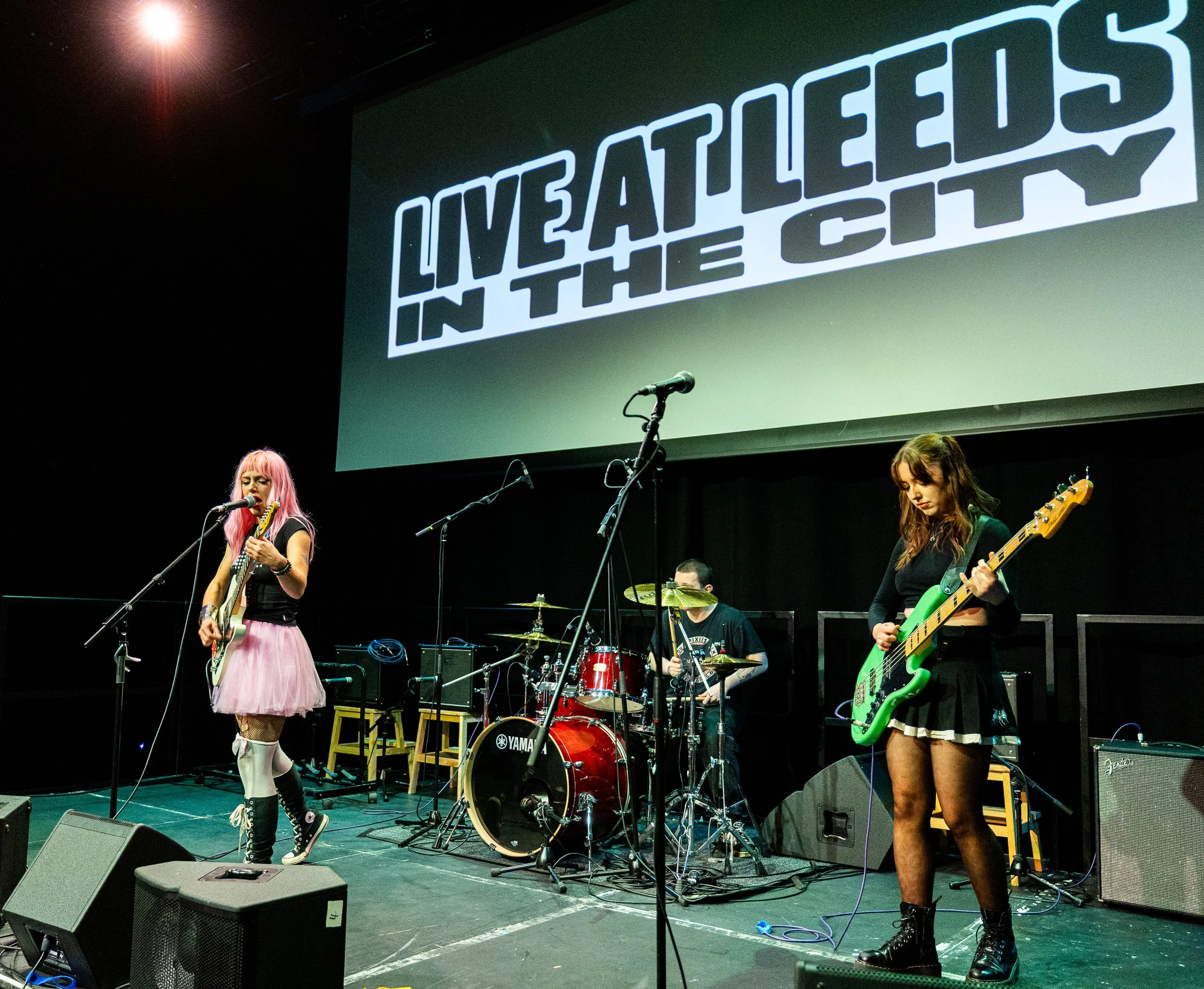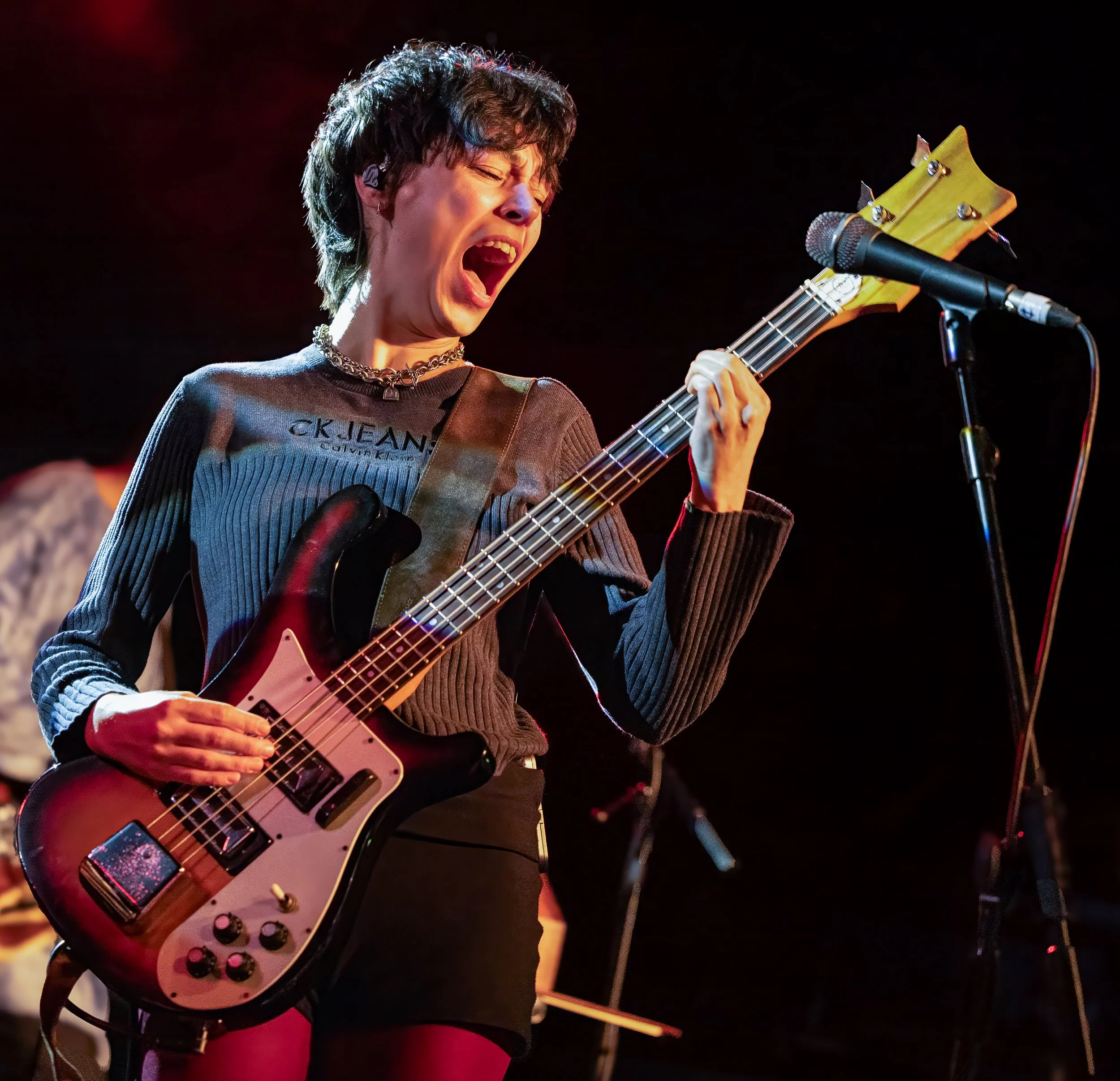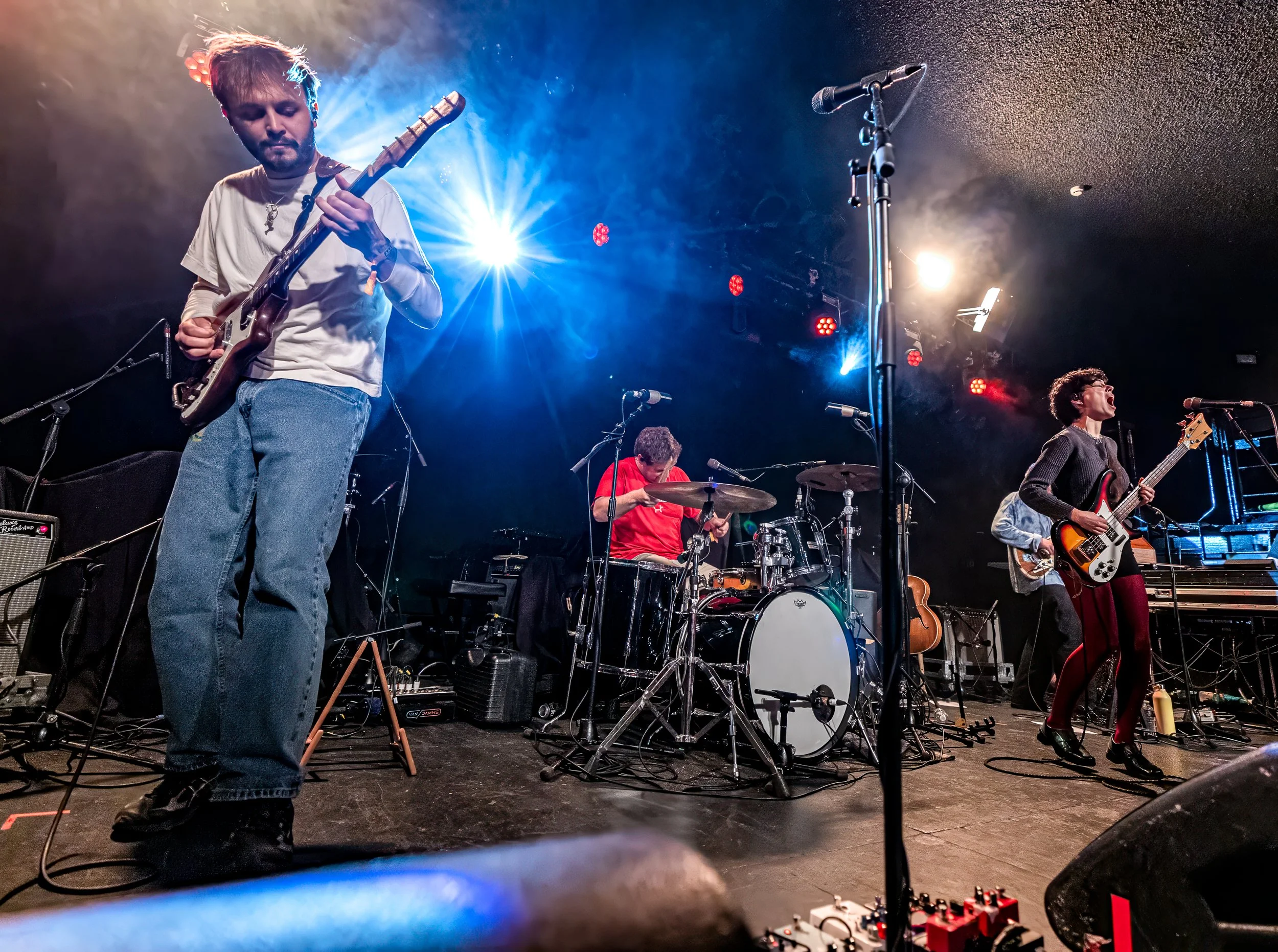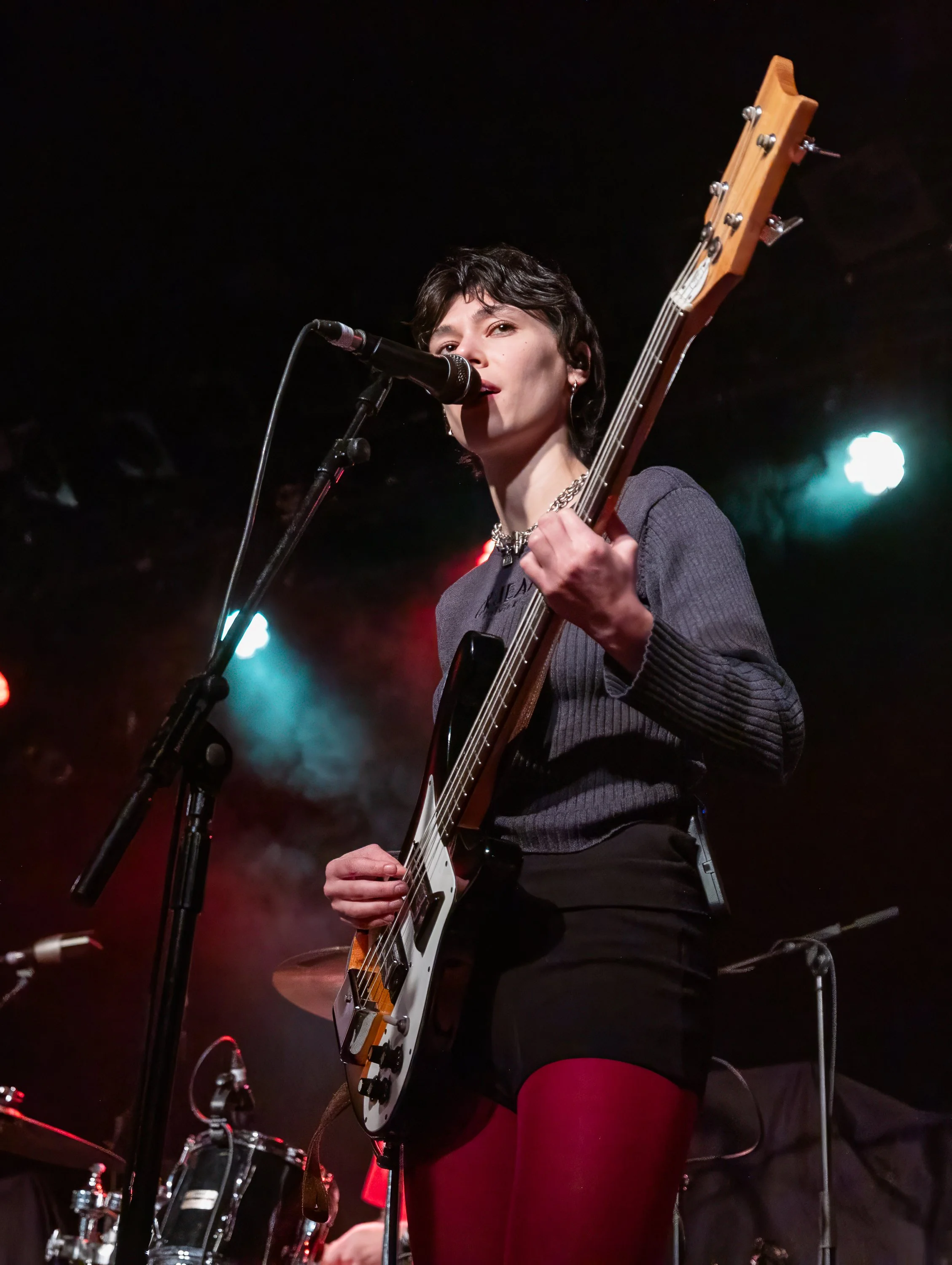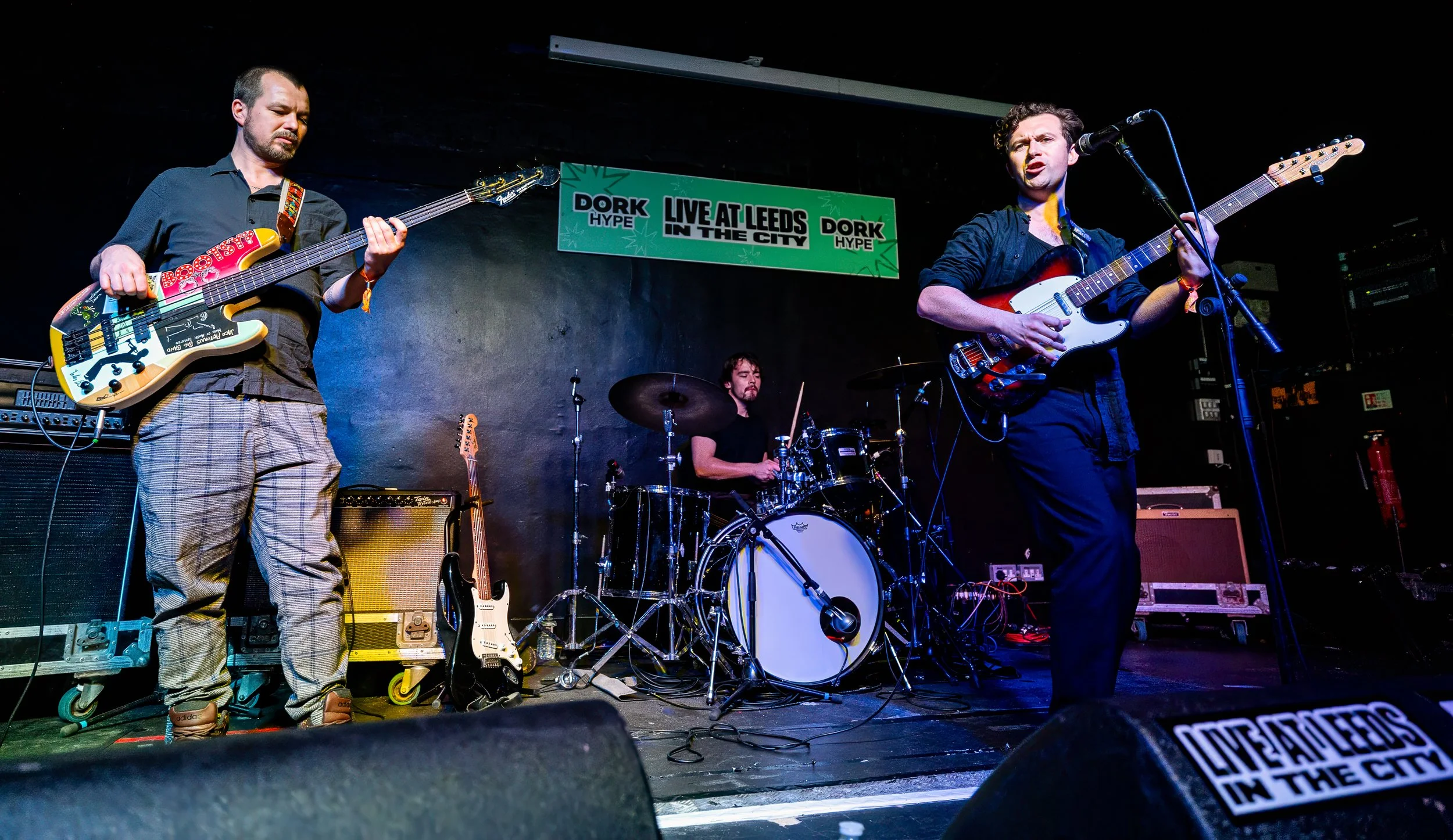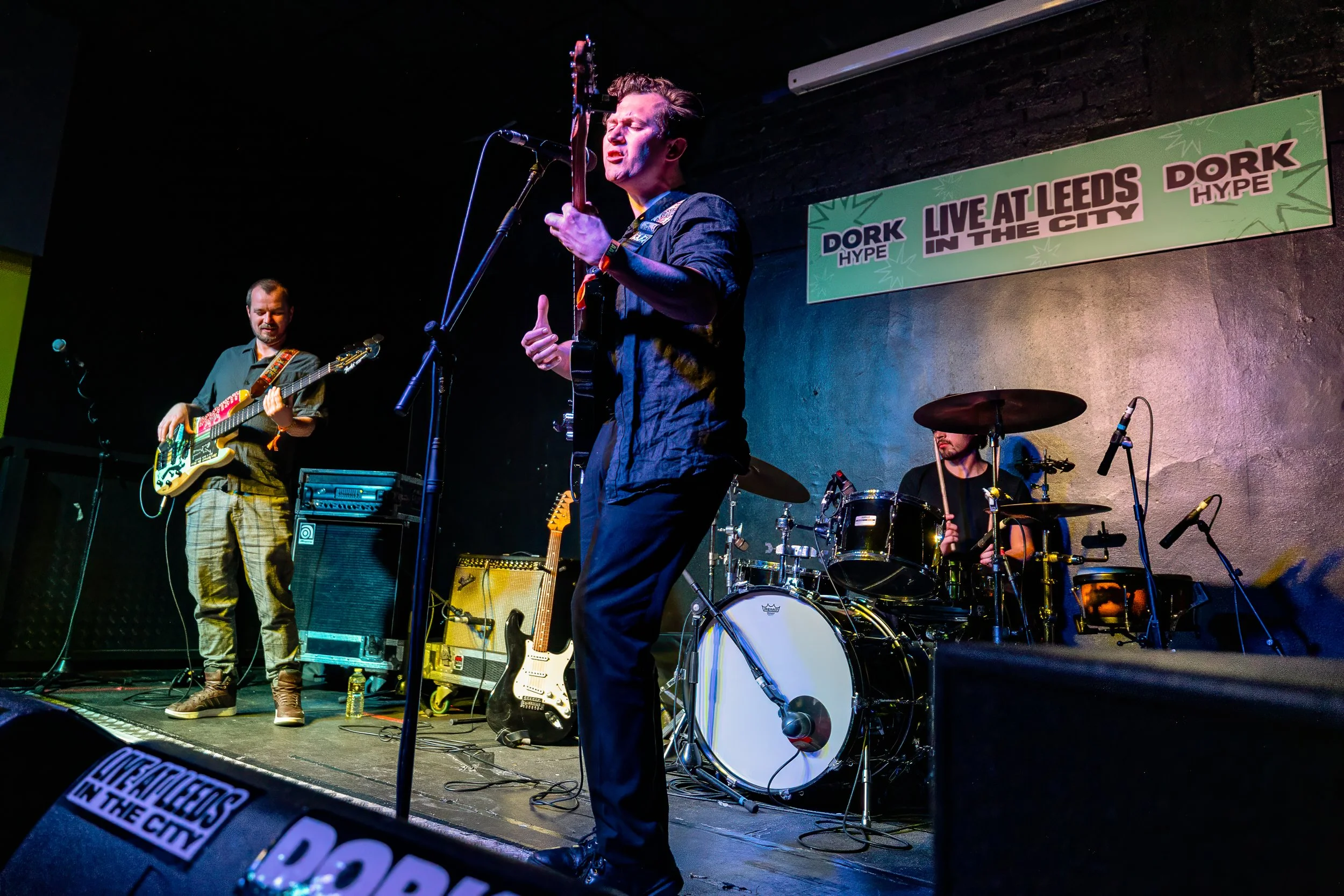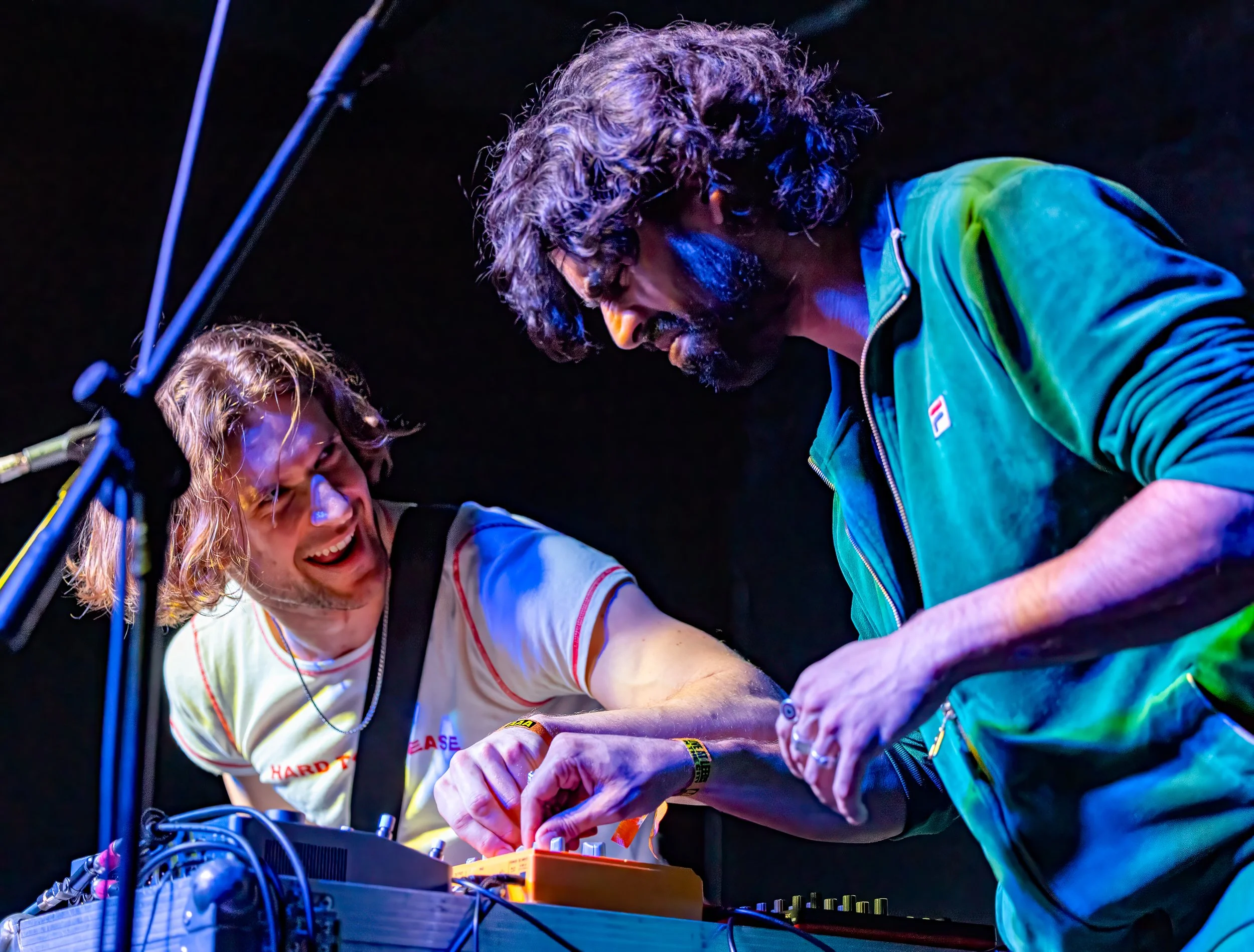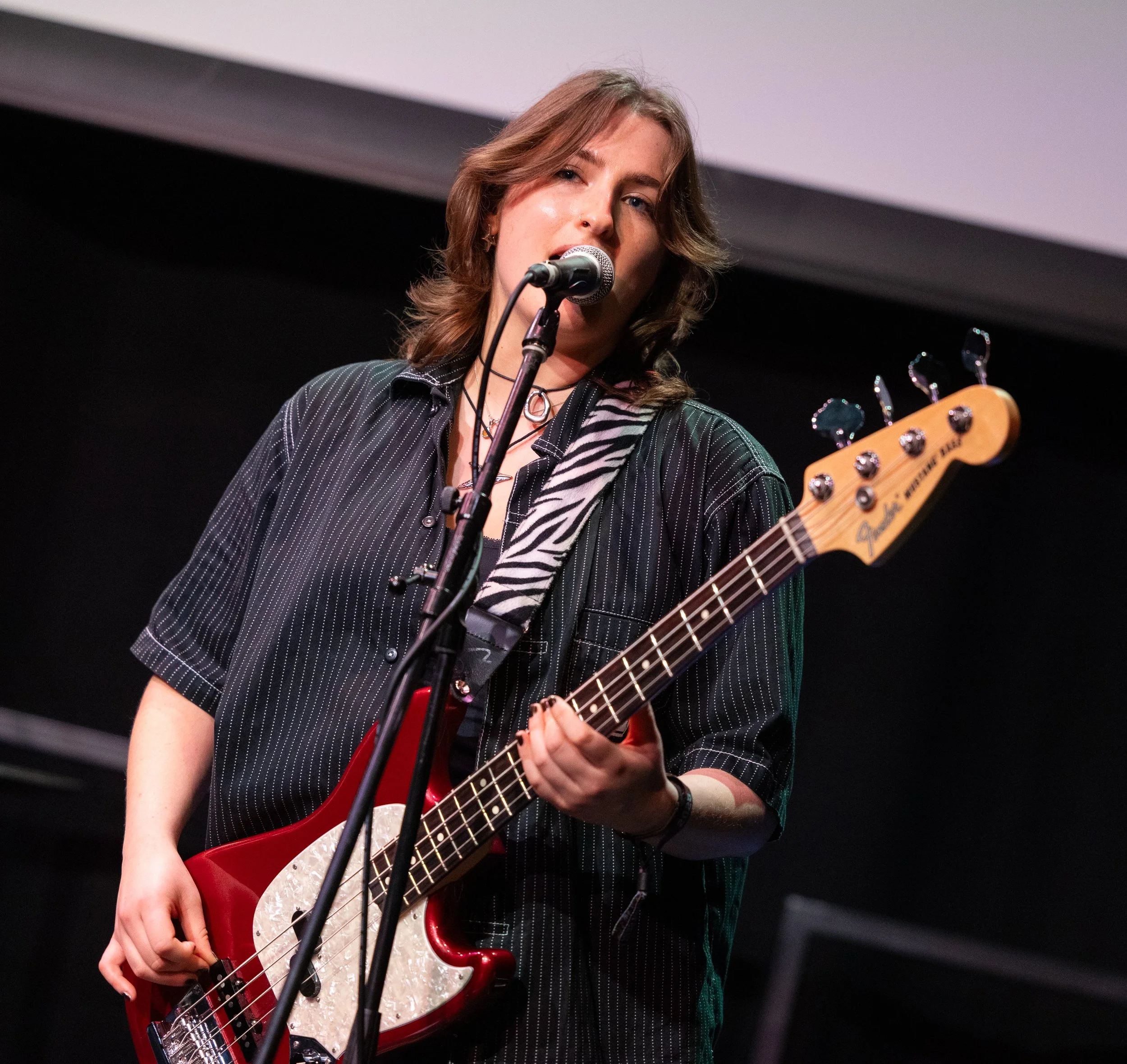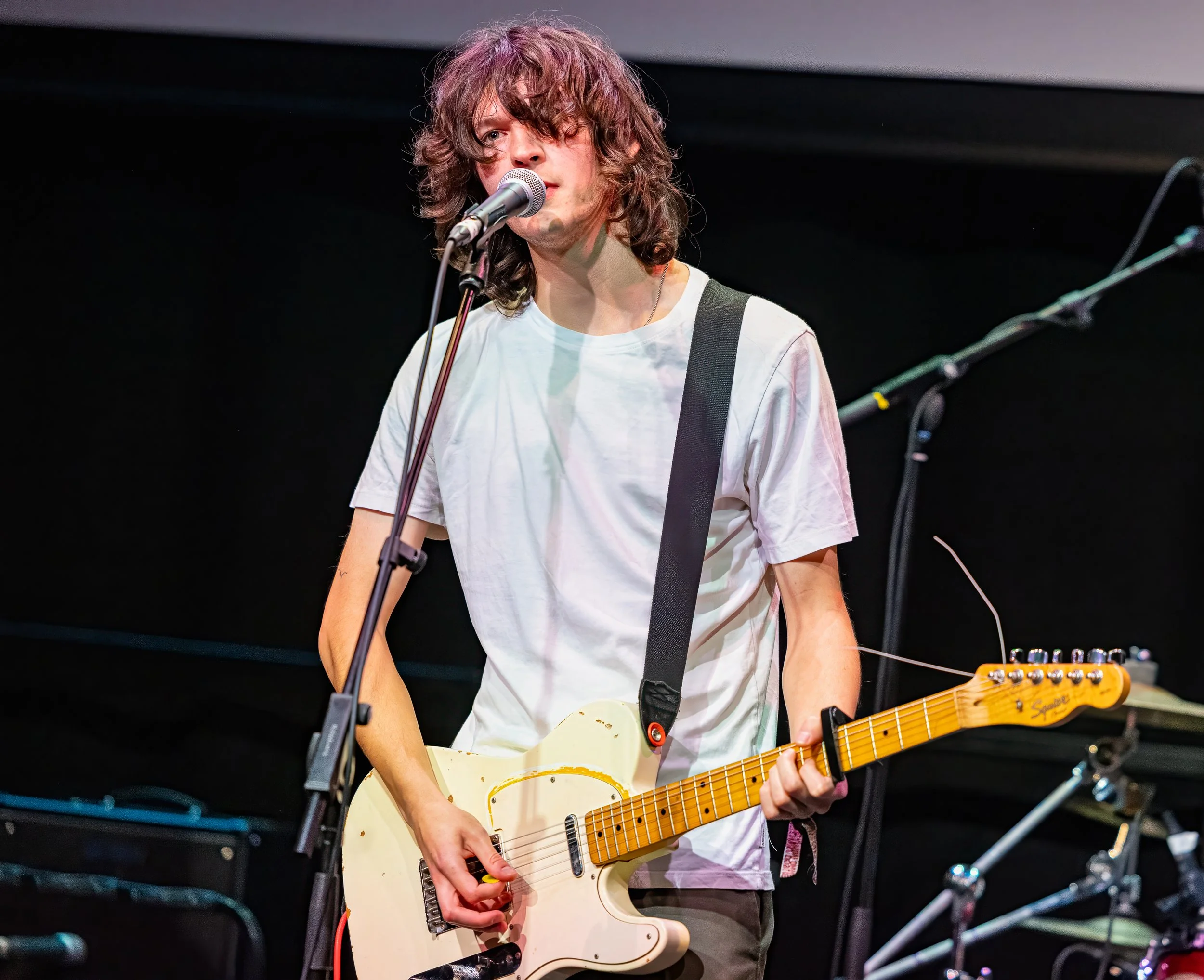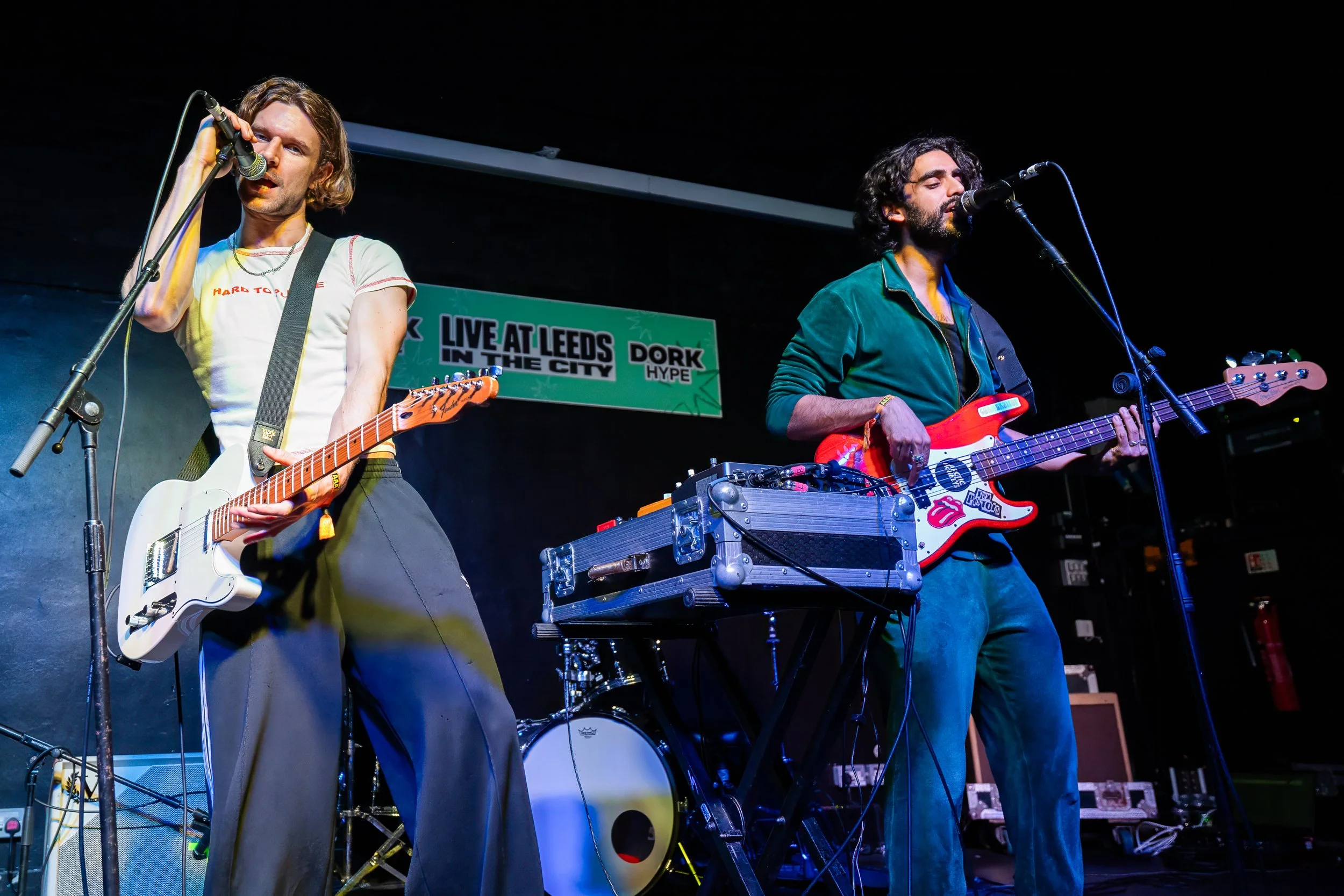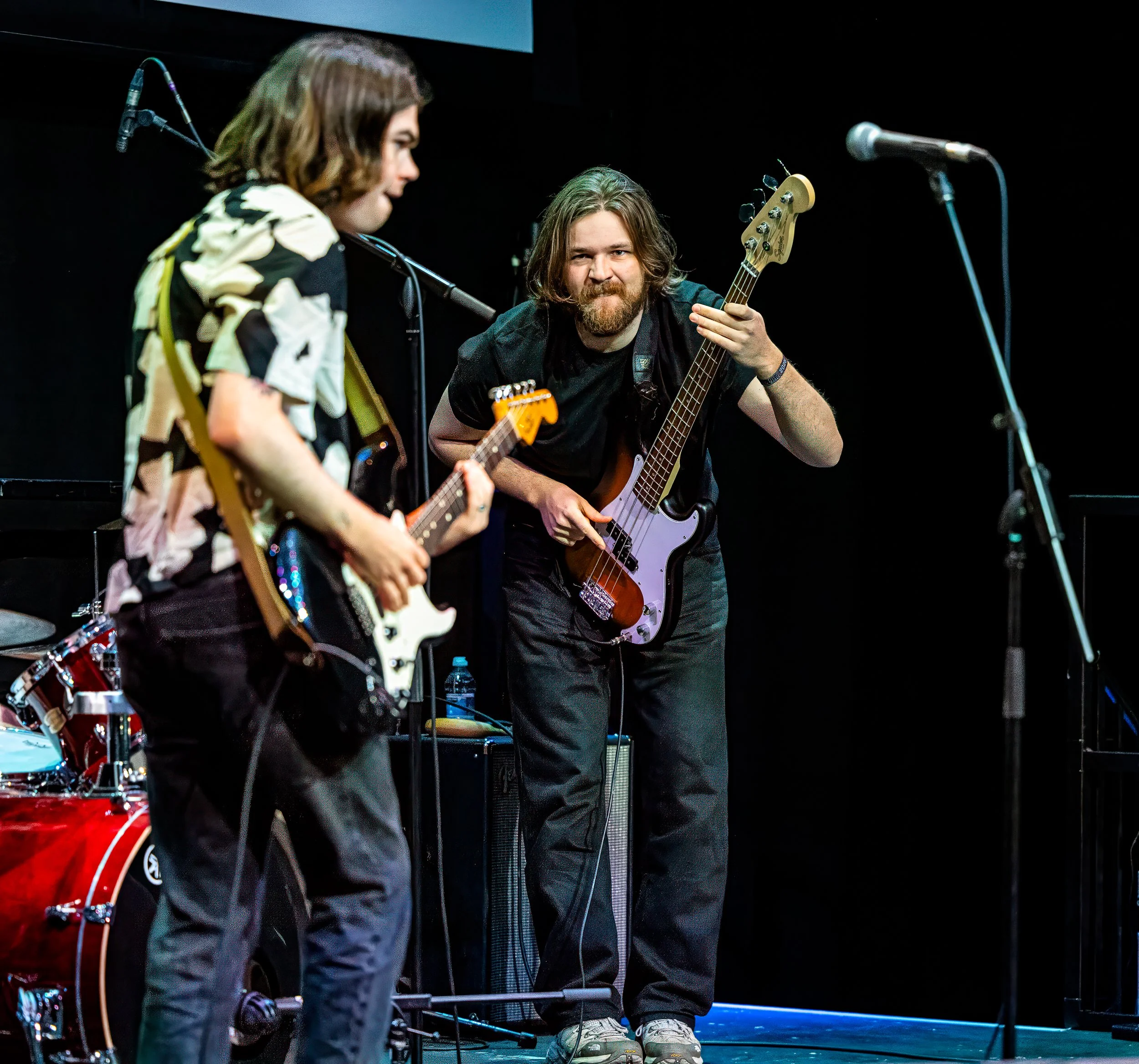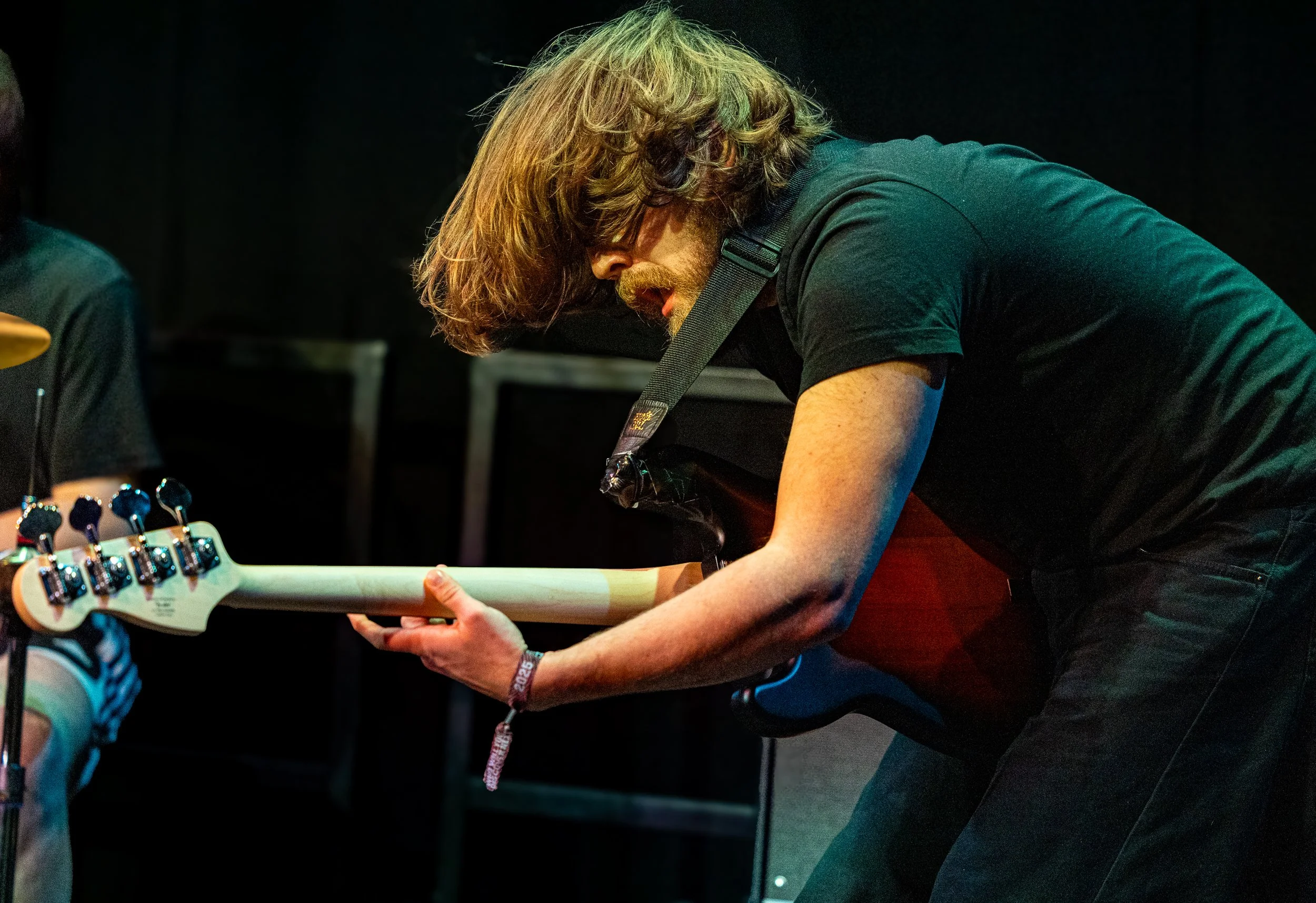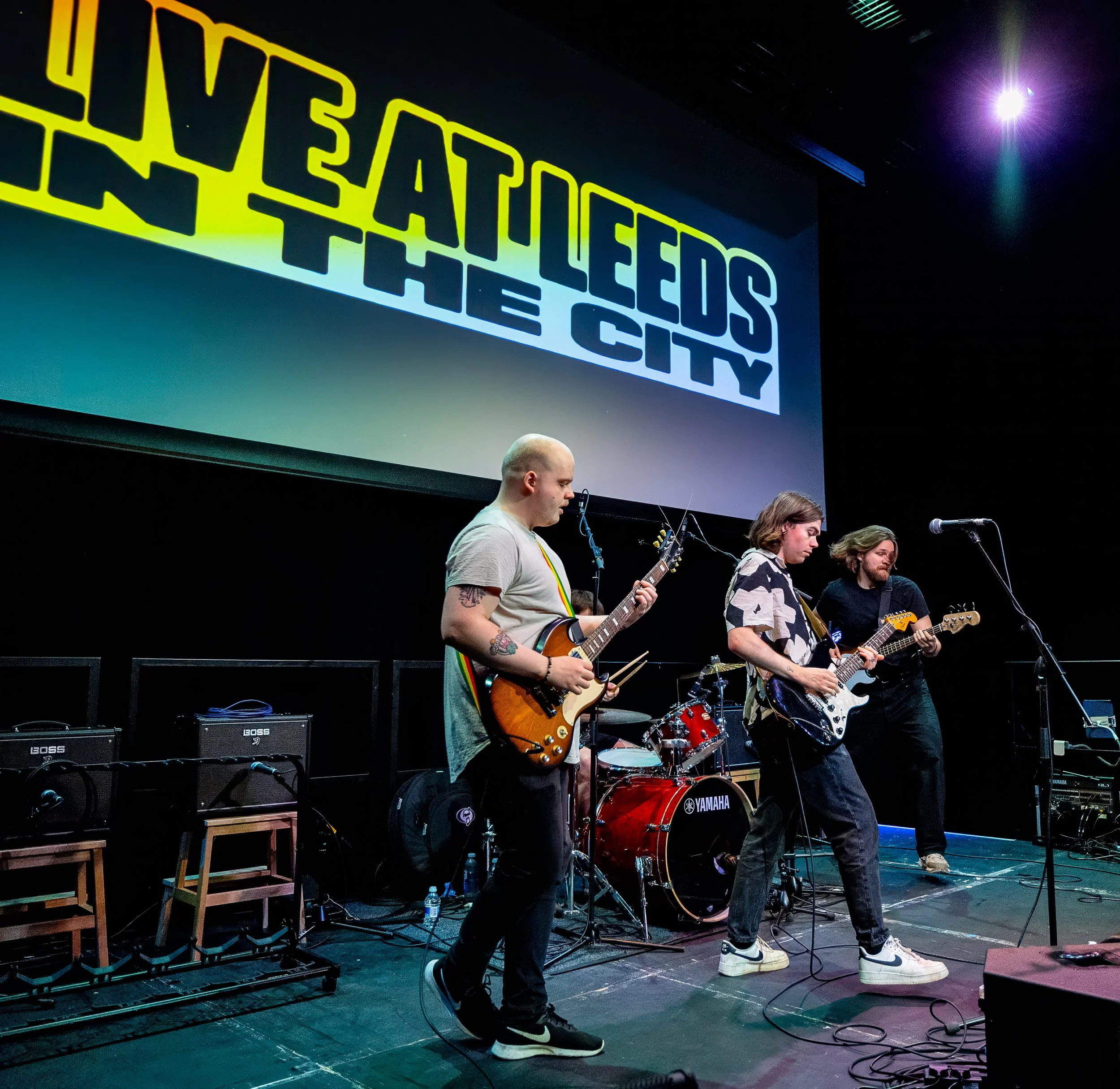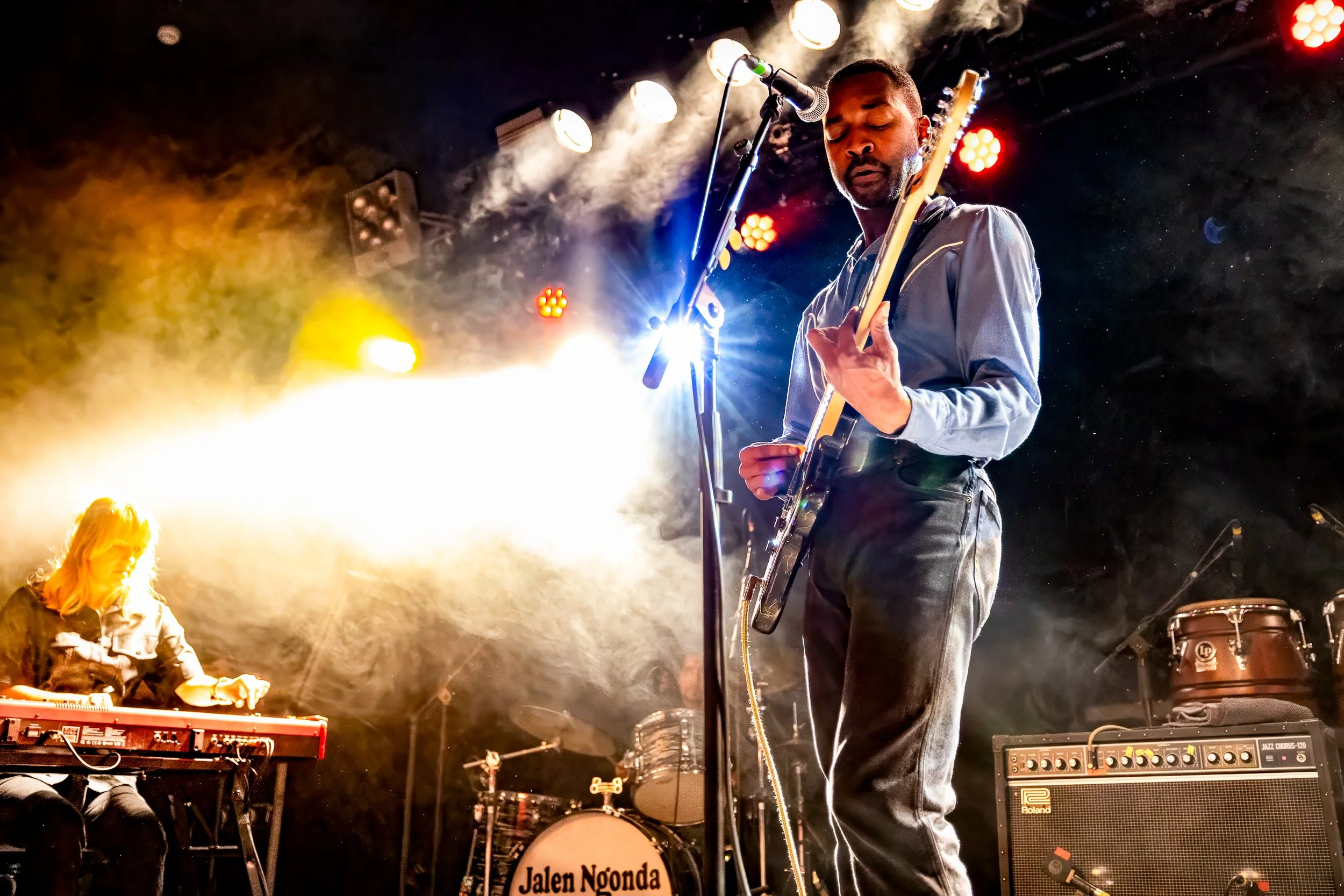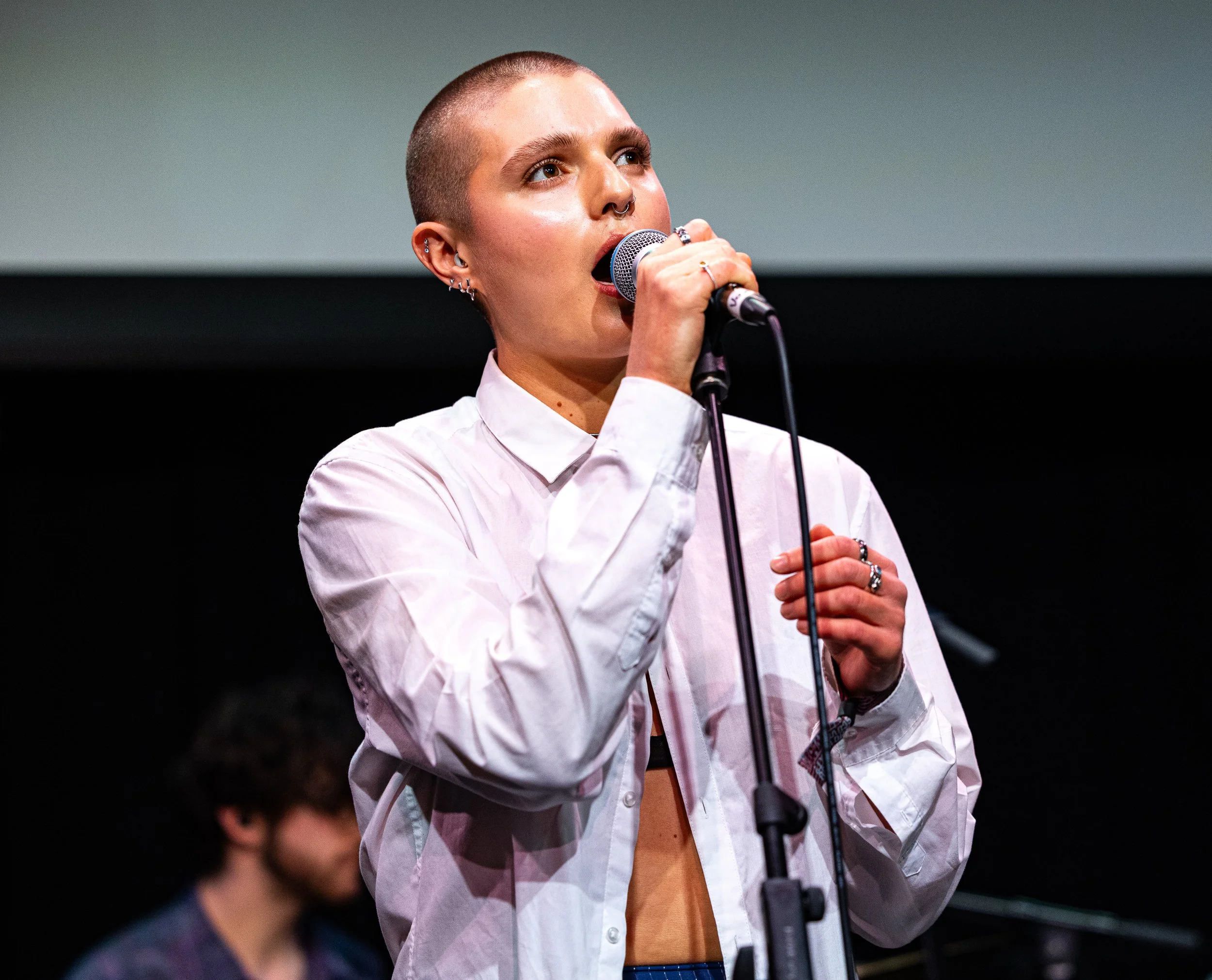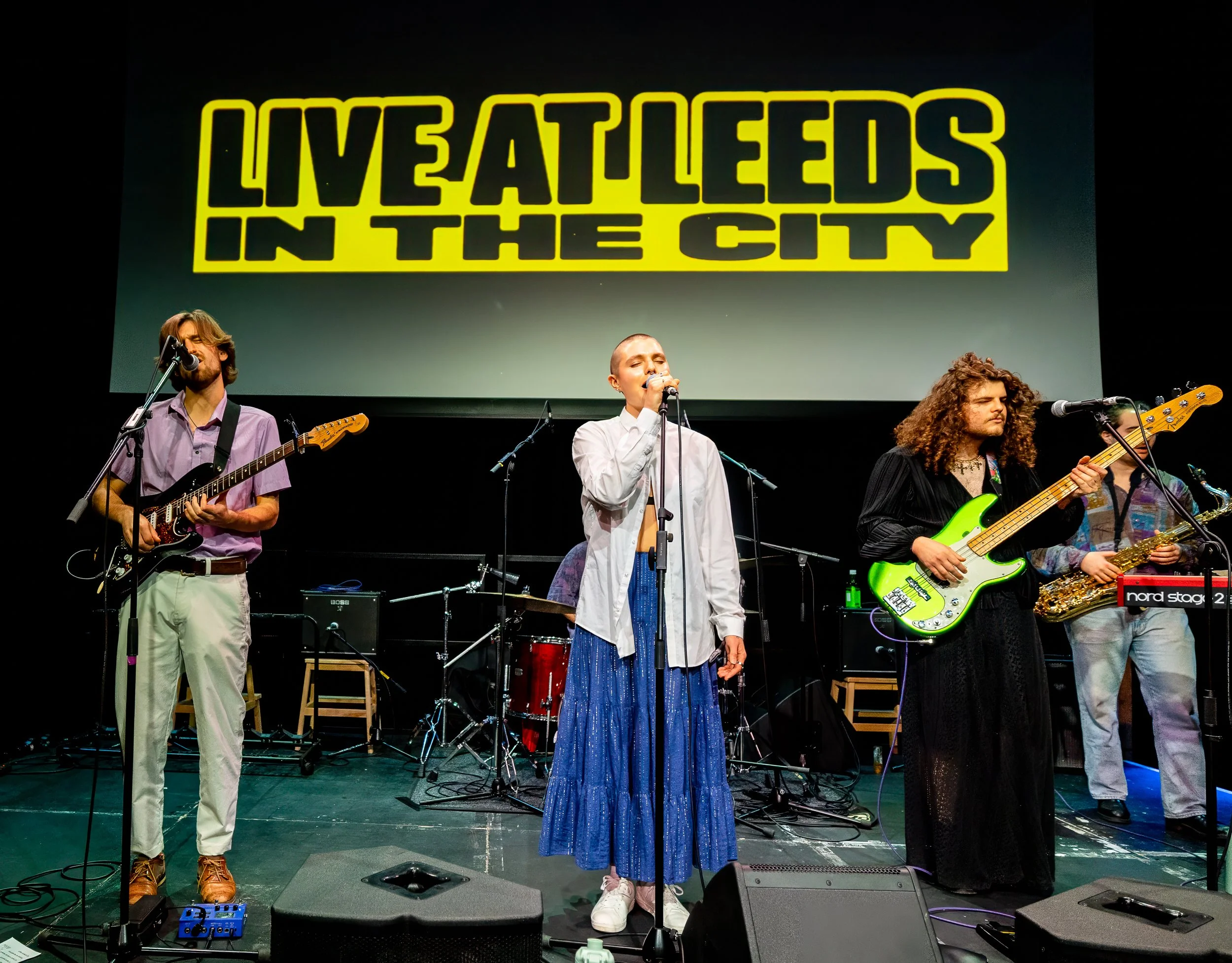LIVE AT LEEDS (IN THE CITY) // LEEDS
Three Rooms, Twenty Bands, One Perfect Storm: Live at Leeds Reloaded
⭐⭐⭐⭐ (4/5)
KEO @ Beckett UNI Live at Leeds (In the City)
Photocredit: John Hayhurst
Live at Leeds: In the City has never been a festival for the faint-hearted. It’s a sprawling, city-wide sprint—one part treasure hunt, one part cardio session, and entirely dependent on your willingness to dash between venues that seem to move further apart every year. But this time, with the rain turning the pavements into slipways and half the schedule scattered miles apart, I made the smartest decision of the day: after my early sets, I locked myself into the Beckett University triangle—the Main stage, SU2, and the Beckett Theatre just down the road.
Three rooms. Twenty bands. Zero trekking. Maximum discovery.
Still, the day began gently enough: Northern Guitars, a non-alcoholic beer in hand, easing into things with Scarlett Loran. She has that rare, disarming clarity some folk singers find early—songs stripped of disguise, her voice steady even when the lyrics trembled. There’s a hush that settles when someone writes with that much emotional plainness. I stood there thinking: if the rest of the day is this sincere, I’m done for. It wasn’t, of course—not even remotely.
From there it was a wet dash to The Key Club for So Good, who shook off any lingering delicacy from the morning with a tight, scrappy brat punk dance indie set. The place was already busy, the crowd already half-feral. Guitars ricocheted around the basement; brat pop hooks came fast, and Sophie and her 2 dancing/kicking singers wasted no time in getting up front and personal with anyone daring to be near the stage. A jolt to the system in the best possible way.
After that, I made the call that would define the rest of the festival for me: abandon the rain, abandon the city-wide sprint, and devote myself fully to the Beckett University triangle — Beckett Main Stage, SU2, and the unexpected gem that was the Beckett Theatre. Three stages within easy reach, dry floors, short queues, and an almost conveyor-belt frequency of live sets. It’s the closest Live at Leeds has ever come to a stationary festival-within-a-festival, and honestly? It was perfect.
My Beckett residency began with Bold Love in SU2, and immediately it felt like the right choice. The Dublin six-piece brought huge, widescreen indie built on dual vocals and emotional heft, the kind that hits you square in the sternum. Their songs carry that “let’s just say it out loud” intensity—swells of harmony, guitar lines that ring clean and purposeful, choruses that make you straighten up slightly without noticing. They’re already operating like a band too large for the rooms they’re in. SU2 tried its best, but by the end it was bursting at the seams.
A short wander down the road to the Beckett Theatre and the day took its first unexpectedly elegant turn. The space, normally a lecture hall, was transformed: wide, open, ridiculously well-tuned. Darcie T took full advantage. Her alt-pop leans dramatic on record, but live—with that pristine sound system—it gained a startling sharpness. She carried herself like someone who knows her strongest weapon is her voice (even with a cold), and she wielded it without hesitation.
Back at SU2, Humane the Moon unravelled their knotty, rhythmic indie with a restless sort of energy. The evolution from a Max Hanley solo project to full band showed: drums swung between danceable and jagged, guitars snapped into focus then cracked open again. “The Curb” arrived all elbows and blunt edges, while the rest of their set moved like a march through low-lit alleyways—moody, clipped, unexpectedly groovy.
Beckett Main offered a complete shift in temperature with Honeyglaze, whose cool precision and refusal to overplay won the crowd instantly. Their songs don’t care about spectacle; they care about structure, tone, and atmosphere. On “Don’t,” Anouska Sokolow’s dry vocal delivery did all the heavy lifting, leaving the band to build a scaffolding of tension behind her. Their newer material from Real Deal stretched out into strange, beautiful shapes, guided by a band who trust silence as much as sound.
The Theatre then opened its arms for Laura Kindelan, whose blend of jazz, alt-soul and singer-songwriter nuance created one of the afternoon’s most quietly impressive sets. Her guitar work was warm and deliberate; her voice carried a softness that demanded focus, vibrato reminding me of Lianne La Havas. “I Wish I Wrote A Love Song” glowed under the stage lights—every chord felt intentional, unhurried, alive. Complete bliss, and perfect in this venue where the sound system was impeccable.
SU2 then delivered a contrasting hit of wry lyricism and fuzzy folk-rock courtesy of Brodie Milner. He’s the rare sort of performer who can make you laugh in one breath then knock the air out of you in the next. “Drinking Martinis in the Olive Gardens of Gethsemane” shouldn’t work as a song title, but in his hands it becomes oddly touching, even profound. The guitars buzzed, the humour bit, and the emotion sat quietly beneath the sarcasm. A sharp set from an artist who treats songwriting like storytelling rather than performance.
Downstairs on the main stage, Radio Free Alice provided one of the day’s breeziest highlights. Their indie-rock is crisp, melodic, and emotionally bittersweet—music that feels light until you pay attention to what’s actually being said. “Empty Words” lit up the room immediately, the kind of track that feels like it’s been around for years and not just this summer. “Paris is Gone” stirred something nostalgic from the crowd, an immediate singalong moment in their set. They carried themselves with confidence, the type that suggests momentum is already building behind them.
The Theatre followed with Twinsize, who wrapped the space in warm shoegaze haze. Thick reverb, vocals that floated somewhere above the ceiling, guitars that swelled like storm clouds—it was immersive, absorbing, and exactly what that room was made for. Their set didn’t feel like a performance; it felt like drifting through layers of sound at the bottom of a swimming pool. Time slowed, thickened, and stretched into “Something that Bites”.
Back at SU2, Kean Kavanagh drifted in with loose, country-tinted indie charm. There’s something decidedly unhurried about him. He slides through grooves with half-closed eyes, toys with melody, lets arrangements breathe. New song “Jimmy” fluttered into the air with a late-night soft rock feel, even though it was barely evening. He has the poise of an artist who trusts his instincts and expects the audience to follow his lead.
Then it happened. The moment the entire day tilted.
KEO stepped onto the Beckett Main stage and, within seconds, took ownership of the room. This is what I’d been waiting for —their set was the reason I’d committed to the Beckett triangle in the first place, and they exceeded every expectation. Finn Keogh’s voice arrived cracked, raw, and gorgeously volatile. Guitars simmered, drums pulsed, and then the whole thing exploded.
“Hands” opened like a warning shot, all grit and urgency.
“Thorn” and “I Lied, Amber” tore straight through the audience—desperate, melodic, utterly gripping.
“Crow” closed the set on a knife-edge of tension and catharsis, even including snippets of The Doors “The End” which just shows their class and ambition.
Every song felt like it belonged to a band standing on the threshold of something seismic. This was the set of the day by a long shot. The room transformed—sweat, noise, total unity. Bands dream of this moment. KEO seized it.
After that storm, I grabbed a pint of Guinness from the SU bar. Leonie Biney in SU2 felt like a warm compress on a bruised body. Her lo-fi acoustic indie-pop carried a gentleness that played beautifully in this smaller room, everything glimmered like soft candlelight. A perfect reset.
Katy J Pearson brought colour and brightness back to the Main stage, her voice ringing gold over sunny Americana-tinged indie-pop. Songs from her album “Someday, Now” sparkled. She has a natural lightness about her—a performer who seems to glow the moment she starts singing. There was a definite shift in audience too, a more mature representation than the younger student rock fans that were here 30 minutes ago.
Clitspit though bucked the trend at the Theatre next, unusual for this venue to have a burst of feminist punk with jagged teeth. Loud, furious, hilarious, brilliantly messy—they turned the space into a full-throttle shout-along. Every song a 3 minute monster - favourite title was “Otley Run Massacre”, no stone left unthrown, it was Leeds DIY energy at its most radiant and confrontational.
MT Jones offered a velvet-soul palate cleanser back in SU2. His voice—smooth, controlled, impossibly rich—stole the room instantly. “All I Do” arrived like a slow dance at the end of a long day, the whole crowd swaying without thinking. This audience clearly keen for the next 2 acts on the main stage, whilst that younger crowd were probably pogoing to Fat Dog at Stylus and then moving on for Hot Wax at The Wardrobe.
On the Main stage, Divorce delivered one of the evening’s most gripping performances. A band with the longest collective names - Tiger Cohen-Towell is mesmerising to watch, one minute giving you the side eye look, then the next she’s shrieking like a banshee. Their blend of alt-country drama, shoegaze weight, and sardonic theatricality hit with ferocity. “Checking Out” punched; “All My Freaks” ached. They’re bold, strange, magnetic—a band you can’t look away from because they’re always doing something interesting.
April Tapes kept the Theatre fires burning with tightly constructed alt-rock. Their harmonies locked in beautifully, guitars driving everything forward. One of the guitarists was wearing a Divorce T-Shirt though, probably wishing this wasn’t the worst clash of the day for him. They’re clearly in their ascent era—young, ambitious, and massively likeable.
SU2 took a sharp turn and became a festival rave for double act KuleeAngee, whose indie-electronic exuberance pushed tired feet back into motion. “Animated Love” pulsed with samples and bounce; the room felt suddenly, joyfully neon-lit. This was the second wind in musical form that we all needed.
HYLUR had flown in from Iceland and drove from London this morning to be here. They arrived in the Theatre with Icelandic emotional force—angsty, expansive, storm-soaked rock that climbed from murmurs to avalanches. They brought drama without pretense, intensity without artifice and a hairy bass player that seemed to constantly break his amp cable whilst casually eating a banana on stage. It was one of those sets that makes you turn to a stranger and nod because you’re both thinking the same thing: this is weird but it rules.
Jalen Ngonda @ Beckett Uni Live at Leeds (In the City)
Photocredit: John Hayhurst
And then Jalen Ngonda closed the Main stage like a master craftsman polishing off a perfect day. His voice—pure, controlled, effortless—brought a full-room hush. “Come Around and Love Me” soared like a Smokey Robinson classic. It felt like the kind of performance that could convert anyone into a soul music believer and probably the last time we’ll see him in such a small room. It was packed in there and he deservedly had headliner status with “If You Don’t Want My Love” closing that part of the festival.
Finally, Glass Frogs closed the Theatre with jazz-funk looseness, philosophical lyrics and grooves that felt endless. One minute glorious harmonic choruses, then sax solo’s, funky guitar and keys and operatic vocals supplied by a beautiful Sinead O’ Connor look alike, and next to her, a hair bear in a black dress on bass. They turned the space into one final collective exhale. A fitting end: warm, alive, and slightly surreal - like Zappa Plays Pop and thankfully, the kind of thing that AI could never create.
I realised I hadn’t moved more than a few hundred metres in hours—and yet I’d seen close to twenty bands, each one distinct, each one brilliant in their own way. Live at Leeds still rewards the wanderers, but this year proved something else too: sometimes staying put gives you the clearest view of the future.
Words and Photos - John Hayhurst

